US couple whose yacht was hijacked by prisoners were likely thrown overboard, authorities say
An American couple who was feared dead after their catamaran yacht was hijacked by three escaped prisoners were likely thrown overboard in the Caribbean Sea, authorities said Monday.
Ralph Hendry, 66, and his wife, Kathy Brandel, 71, were last known to be near Grand Anse Beach in Grenada. Their catamaran, named "Simplicity," was found abandoned in St. Vincent and there were signs of violence at the scene, according to Royal Saint Vincent and the Grenadines Police Force spokesperson Junior Simmons.
Although family, friends, and members of the sailing community had hoped the pair was still alive, police in St. Vincent and the Grenadines said Hendry and Brandel were likely thrown into the ocean when their vessel was hijacked. "Based on the investigation thus far, it is presumed that Ralph Hendry and Kathy Brandel are deceased," Simmons said in a video statement Monday .
Don McKenzie, police commissioner of the Royal Grenada Police Force, said at a news conference Monday that the three prisoners escaped on Feb. 18 from the South St. George Police Station. They hijacked the catamaran on the following day and traveled to the nearby island of St. Vincent, where they were arrested last Wednesday, he said.

Police: Prisoners 'disposed' occupants of Simplicity
After escaping from the South St. George Police Station, McKenzie said the three prisoners "commandeered" the catamaran, which had two U.S. citizens on board, Hendry and Brandel. The couple were likely thrown into the ocean and died, police in Grenada said.
“Information suggests that while traveling between Grenada and St Vincent, they disposed of the occupants,” McKenzie said.
McKenzie added that while police have "nothing conclusive" to prove that the couple was dead, he cited a "low probability" they were alive.
The suspects are being investigated for several criminal acts, including "bodily harm to the couple," according to Simmons. Authorities discovered signs of violence on the couple’s boat after it was found abandoned, he said.
"Several items were strewn on the deck and in the cabin, and a red substance that resembles blood was seen on board," Simmons said.
Stay in the know: For more updates, sign up for USA TODAY's Daily Briefing.
Police investigating prisoners' escape
According to the Royal Grenada Police Force, the escaped prisoners were identified as Ron Mitchell, 30; Trevon Robertson, 19; and Abita Stanislaus, 25.
All three were arrested and charged in December with one count of robbery with violence. Mitchell also was charged with one count of rape, three counts of attempted rape, and two counts of indecent assault and causing harm, police said.
McKenzie said police have launched an investigation into the escape and are looking into whether it was "a system failure" or a case of a "slip up."
"All aspects of that investigation are on the table," he said, adding that the police holding station where the three men were being held has "sufficient safety to prevent an incident like that (from) occurring."
The three men appeared in court in St. Vincent on Monday and pleaded guilty to four counts each of immigration-related charges, including entering the island as a "prohibited immigrant" with no passport, according to Simmons. They are scheduled to be sentenced on those charges in March.
Simplicity discovered by paddle-boarder near St. Vincent
The Salty Dawg Sailing Association said it was alerted by a cruising skipper about Simplicity, which was found "anchored and abandoned" off a beach on the island of St. Vincent. The association added that its live member’s tracking map showed the vessel anchored in Grenada before it moved to its last anchorage off St. Vincent.
"The good Samaritan had boarded the boat and noted that the owners … were not on board and found evidence of apparent violence," the association said in a statement.
People reported that a sailing captain was paddle-boarding near St. Vincent when he noticed the catamaran with a broken sail. When he boarded Simplicity, he found the deck covered in blood and two passports belonging to Brandel and Hendry, according to People.
The St. Vincent Coast Guard took possession of Simplicity and local police are investigating with the U.S. Embassy and the Grenada police, according to the association.
Family, sailing community mourns couple's disappearance
According to a GoFundMe page raising money for the couple's families, Hendry and Brandel were "seasoned sailors who lived on their beloved catamaran." The pair spent their retirement sailing, the GoFundMe page states.
"This heartbreaking tragedy has left not only the sailing community, but also their families, shattered," the GoFundMe page states, adding that Brandel had recently welcomed her first grandchild.
The couple had sailed their yacht in last year's Caribbean Rally from Hampton, Virginia, to Antigua, and were spending the winter cruising in the eastern Caribbean, the Salty Dawg Sailing Association said. The association noted that the couple were veteran cruisers and longtime members of the association from its earliest days.
"Warm-hearted and capable, they both contributed to building the SDSA and Kathy sat on the association’s board for two years," the association said.
In a statement from the couple's families on Saturday, they thanked authorities and those who helped gather information.
"It means so much to us that so many people cared for Ralph and Kathy as friends and fellow cruisers that they are willing to stop and help in whatever way possible," the couple's sons, Bryan Hendry and Nick Buro, said.
Travel advisories near the Caribbean
Both Grenada and St. Vincent and the Grenadines are listed under a Level 1 travel advisory, according to the U.S. State Department. A Level 1 travel advisory urges U.S. citizens to take normal precautions in the area.
Other Caribbean islands are more dangerous, with Level 2 and 3 advisories in effect for the Bahamas and Jamaica, respectively. The advisory for the Bahamas was issued last month , warning travelers to "exercise increased caution" due to crime in some areas.
A security alert posted by the U.S. Embassy in the Bahamas also advised U.S. citizens to be "aware that 18 murders have occurred in Nassau since the beginning of 2024." The alert warns that murders have occurred at all hours including in broad daylight on the streets.
Contributing: Gabe Hauari, USA TODAY; The Associated Press
- Election 2024
- Entertainment
- Newsletters
- Photography
- Press Releases
- Israel-Hamas War
- Russia-Ukraine War
- Latin America
- Middle East
- Asia Pacific
- AP Top 25 College Football Poll
- Movie reviews
- Book reviews
- Financial Markets
- Business Highlights
- Financial wellness
- Artificial Intelligence
- Social Media
US couple whose catamaran was hijacked were likely thrown overboard and died, Grenada police say
Police in Grenada said the U.S. elderly couple Ralph Hendry and Kathy Brandel, whose catamaran was hijacked a week earlier, were likely dead. (AP Video: Kenton X. Chance)
Relatives stand nearby as investigators from Grenada and St. Vincent and the Grenadines stand aboard the yacht “Simplicity,” which they say was hijacked by three escaped prisoners with two people on board, now anchored at the St. Vincent and the Grenadines Coast Guard Calliaqua Base, in Calliaqua, St. Vincent, Friday, Feb. 23, 2024. Authorities in the eastern Caribbean said they were trying to locate two people believed to be U.S. citizens who were aboard the yacht that was hijacked by the three escaped prisoners from Grenada.(AP Photo/Kenton X. Chance)
- Copy Link copied
The yacht “Simplicity”, that officials say was hijacked by three escaped prisoners with two people aboard, is docked at the St. Vincent and the Grenadines Coastguard Service Calliaqua Base, in Calliaqua, St. Vincent, Friday, Feb. 23, 2024. Authorities in the eastern Caribbean said they were trying to locate two people believed to be U.S. citizens who were aboard the yacht that was hijacked by the three escaped prisoners from Grenada. (AP Photo/Kenton X. Chance)
Investigators from Grenada and St. Vincent and the Grenadines stand aboard the yacht “Simplicity”, that they say was hijacked by 3 escaped prisoners with two people aboard, now anchored at the St. Vincent and the Grenadines Coastguard Service Calliaqua Base, in Calliaqua, St. Vincent, Friday, Feb. 23, 2024. Authorities in the eastern Caribbean said they were trying to locate two people believed to be U.S. citizens who were aboard the yacht that was hijacked by the three escaped prisoners from Grenada. (AP Photo/Kenton X. Chance)
Read the latest: Here’s what to know about a US couple missing in the Caribbean
SAN JUAN, Puerto Rico (AP) — A U.S. couple whose catamaran was hijacked last week in the Caribbean by three escaped prisoners were presumed dead and likely had been thrown into the ocean, police said Monday.
The accounts by police in Grenada and in St. Vincent and the Grenadines were a blow to those who were independently helping search for Ralph Hendry and Kathy Brandel and had hoped they were alive.
Don McKenzie, commissioner of the Royal Grenada Police Force, said at a news conference that the three prisoners escaped on Feb. 18 from the South Saint George Police Station. They hijacked the catamaran Simplicity on the following day and then headed to St. Vincent, where they were arrested last Wednesday, he said.
“Information suggests that while traveling between Grenada and St. Vincent, they disposed of the occupants,” McKenzie said.
McKenzie said he had no conclusive proof that the couple was dead but cited a “low probability” they were alive.
Hours later, the main spokesman for the Royal St. Vincent and the Grenadines Police Force posted a video saying that while no bodies have been found, the couple is presumed dead based on the investigation so far.
The suspects were being investigated for several criminal acts, including “bodily harm to the couple,” spokesman Junior Simmons said in the brief recorded statement. There were signs of violence on the couple’s boat found abandoned in St. Vincent, he said.
“Several items were strewn on the deck and in the cabin, and a red substance that resembles blood was seen on board,” he said.
The nonprofit Salty Dawg Sailing Association has said that Hendry and Brandel were “veteran cruisers” and longtime members of the association, calling them “warm-hearted and capable.”
It said the couple had sailed the yacht in last year’s Caribbean Rally from Hampton, Virginia, to Antigua, and were spending the winter cruising in the eastern Caribbean.
A son of Hendry and a son of Brandel did not immediately return messages for comment.
A GoFundMe page created to raise money for the couple’s family noted that Brandel had recently become a first-time grandmother, and that the sailing community was “shattered” by what happened.
“Kathy and Ralph, experienced adventurers, spent their retirement sailing aboard Simplicity, spending summers in New England and embracing the warmth of Caribbean winters,” the page stated.
McKenzie, Grenada’s police commissioner, said a five-person team was sent to St. Vincent to help with the investigation.
After his brief announcement on Monday, McKenzie and other police officials took questions from local media, including one reporter who asked, “Who is really to be blamed for this massive failure to keep these prisoners under the control of the (Royal Grenada Police Force) which has now resulted in this tragedy?”
McKenzie said police have launched an investigation into the escape and are looking into whether it was “a system failure” or a case of a “slip up.”
“All aspects of that investigation are on the table,” he said, adding that the police holding station where the three men were being held has “sufficient safety to prevent an incident like that (from) occurring.”
When the reporter asked why the three men who were arrested remained in a holding cell instead of prison, Vannie Curwen, assistant police commissioner, said the men first had to see a magistrate who would decide whether to grant bail or order them remanded.
The escaped prisoners, Trevon Robertson, a 19-year-old unemployed man; Abita Stanislaus, a 25-year-old farmer; and Ron Mitchell, a 30-year-old sailor; were charged a couple of months ago with one count of robbery with violence. Mitchell also was charged with one count of rape, three counts of attempted rape and two counts of indecent assault and causing harm, police in Grenada said.
Simmons said the three men appeared in court in St. Vincent on Monday and pleaded guilty to four counts each of immigration-related charges, including entering the island as a “prohibited immigrant” with no passport. They are scheduled to be sentenced on those charges in March.
Who Owns Superyachts In 2023 —And What Does That Mean For You As Crew?
Where once oligarchs, oil tycoons, royals and old money ruled the roost in the yachting world, tech billionaires have increasingly dominated the superyacht market. Who are these people — and more importantly — what does their different style of ‘yachting’ mean for you as crew?
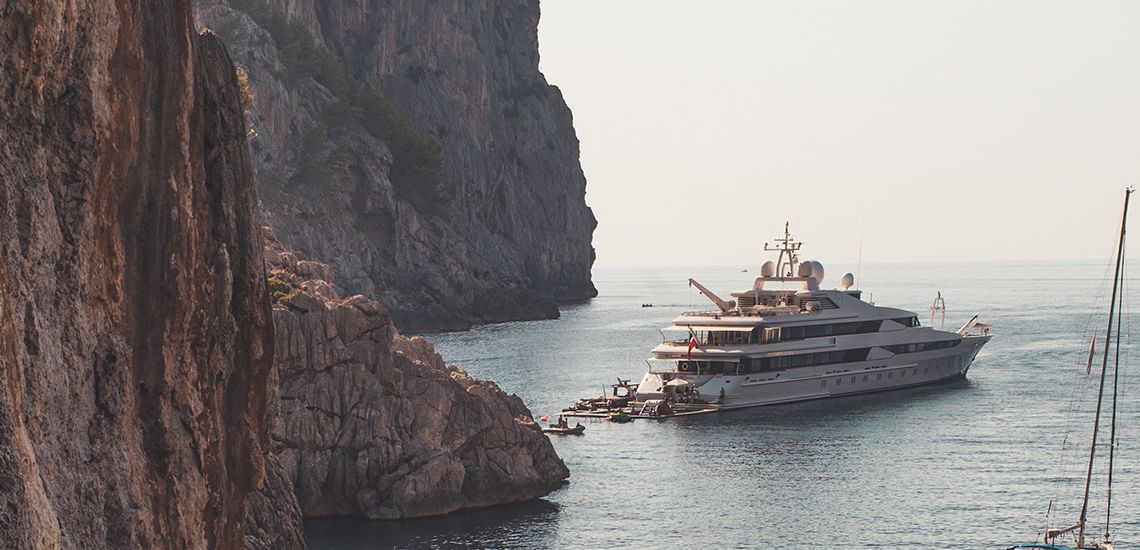
The list of tech billionaires (at least, the list we know of) is long and getting longer by the year. And as their wealth grows, so does the size of the boats they own!
Jeff Bezos, Larry Ellison (Musashi), Charles Simonyi (SKAT), Sergey Brin (Dragonfly), and Larry Page (Senses) are just some of the tech billionaires known to own a superyacht. Mark Zuckerberg, meanwhile, is rumoured to own Andromeda.
While we can only speculate on how these exact individuals use their yachts or what they are like onboard, some general traits might set the tech billionaire yacht owner out as using their yachts differently than generations of yacht owners before them.
Overall, tech billionaires are often younger, more adventurous and less hidebound regarding old rules and service styles. Here are a few general trends we can assume.
They want to eat well, but less fussily, and with a greater premium on health.

Where silver service, ultra-decadent meals, and mountains of wasted food were — and often still are— preferred by old-money yacht owners and charterers, the modern tech billionaire is more likely to be health-conscious and eat food that is plated rather than buffet style or silver service. Yacht chefs now need to be more skilled in special diets, such as plant-based or keto, and offer a broader range of cuisines.
They want to WORK.
Superyachts used to be for holidays only. This was partly by necessity —the lack of connectivity meant that work went on the back burner for summer months as guests swanned around the Mediterranean. Now, the extraordinary technological strides on board allow yacht owners to have offices where they can work anywhere in the world.
They want to go far beyond the milk run.
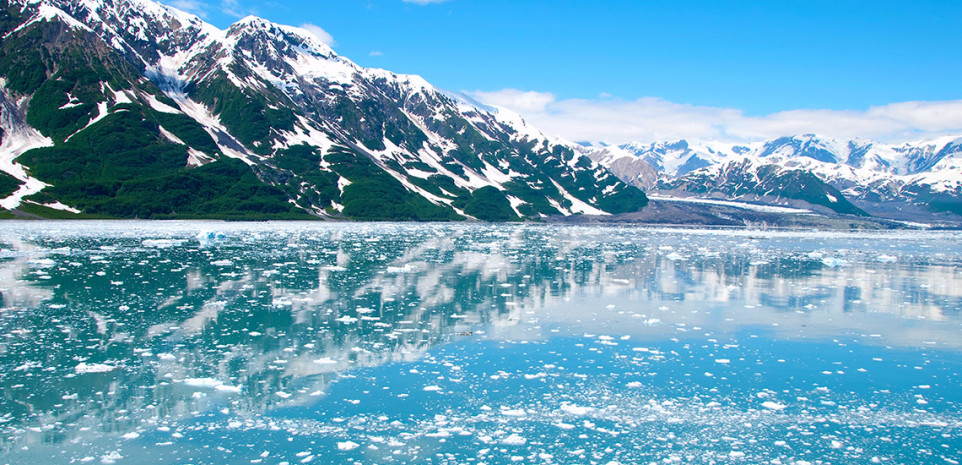
While anchoring off St Tropez or Cap Ferrat for weeks in August will always be in style, there has been an explosion in remote cruising, often fuelled by this younger, more adventurous set of yacht owners who can work from anywhere- Antarctica to Alaska and beyond.
This has fed into the next point…
A desire for adventure and exploration has changed yacht design.
As younger, more adventurous owners like tech billionaires have joined the superyacht market, the design of yachts and the toys they carry have changed markedly. New types of vessels have been created to meet this desire for off-the-beaten-track cruising, from support yachts to water toys to the massive growth in explorer yachts. Gone are the days when one yacht layout was almost identical to another. Now, we have winter gardens, submarines, ice rooms, ski rooms, large onboard offices, and helicopter hangars.
Not all of these changes have been driven by tech billionaires, granted. Still, their vision of what is possible has dramatically changed what yachts look like and how they operate as machines, with new types of propulsion, greater ranges, and a considerable amount more tech onboard.
Some things never change.
One thing hasn’t changed, though—a wealthy person’s desire for privacy. Discretion remains perhaps the most essential trait in any crew member, which you must keep in mind when working on yachts —even in the day of constant social media and shows like Below Deck.
A wealthy person’s desire for privacy and discretion is a constant that crew forget at their peril. Are you ensuring that you are a trusted asset? You may have signed that NDA, but do you let stories slip now and then at the bar? Are you careful about not taking photos onboard that give away anything about the boat or the owners? Do you make sure you don’t share the yacht’s cruising plans?
In a world where stories about tech billionaires will fly around the globe at light speed, you must be the gatekeeper. Stories cannot leave the passerelle.
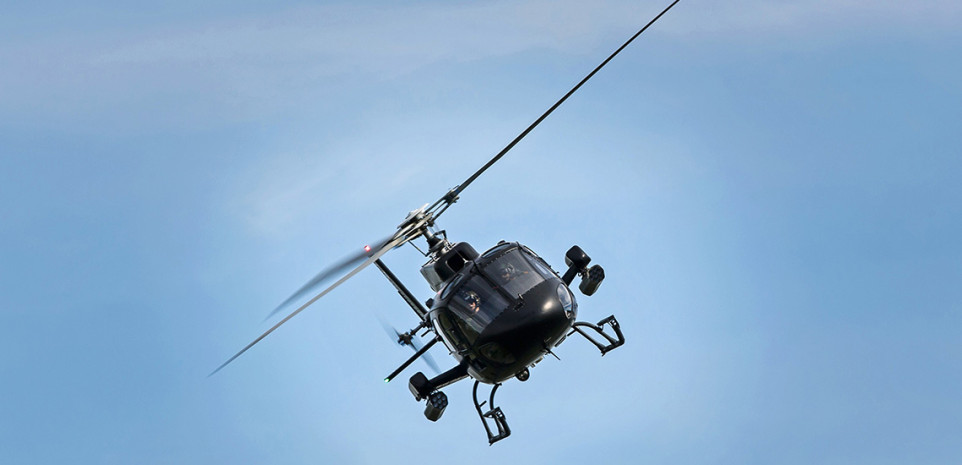
Contact information
Sharon Rose
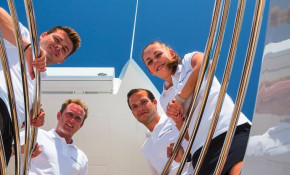
Related news

Navigating Success: Superyacht Industry Unveils Career Roadmaps with ’Raising the Bar’
Raising the Bar, a distinguished think tank comprised of experts from across the superyacht industry, is thrilled to announce the official launch of Superyacht Industry Careers. This groundbreaking initiative, developed through voluntary collaboration and graciously hosted by the Superyacht Alliance for Professional Standards, aims to provide comprehensive career maps tailored for superyacht crew across all departments.

Interview with Sheila, Founder of Source Training: Elevating Standards in Luxury Cleaning and Laundry
We had the privilege of sitting down with Sheila, the visionary founder behind Source Training, a pioneering platform that offers specialised training for luxury cleaning and laundry personnel in the yachting, chalet, and hotel industries. With decades of experience in the yachting world and a passion for preserving nature, Sheila shared her journey and insights into the need for professional training in these essential roles.
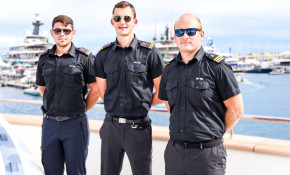
Stripes on Yachts: What Do They Mean?
Whether you are new to the yachting industry or an experienced professional, we’ve all asked ourselves the same question at least once in our career, “what do those stripes mean?” This article breaks down the meanings behind these cryptic stripes.
The luxury boats owned by some of the wealthiest people in tech, from a yacht so big it has its own support boat to superyachts with swimming pools and basketball courts
- Many billionaires like Jeff Bezos and Richard Branson enjoy spending their time on luxurious yachts.
- The boats are decked out with amenities that many Americans can only dream of.
- Here are some of the billionaires in tech who own private yachts.

A regular Jane celebrating a personal renaissance after a long-term relationship might commemorate the new era with an ankle tattoo of a spiritual saying. When you're a billionaire, you could do it instead with a $500 million megayacht .
Amazon founder Jeff Bezos made waves in May riding around the roughly 127-meter "Koru," a Māori term that may signify a fresh start, with his reported fiancée Lauren Sanchez. (In 2019, Bezos finalized his divorce from MacKenzie Scott, whom he was married to for 25 years).
Beyond the private planes occupying the hangars of billionaires, yachts have come to symbolize the highly private sites of leisure and networking reserved for the ultra-wealthy .
Tech billionaires like Bezos, Oracle cofounder Larry Ellison, and Google cofounders Sergey Brin and Larry Page have all purchased their own mini vacation hubs at sea, decking their boats with amenities like gyms, spas, pools, nightclubs, and movie theaters.
For those wishing to experience life aboard these multi-million-dollar yachts, some are available to rent out for a few nights or weeks at a time. Late Microsoft cofounder Paul Allen's yacht can be booked for $2.2 million per week or more, according Bloomberg .
Chartering yachts owned by billionaires like Alphabet cofounder Sergey Brin has previously cost customers anywhere from $773,000 a week to $1.2 million .
It remains to be seen how these vessels will fare against the apparent Orca uprising.
Take a look at some of the yachts that have been owned by tech billionaires.
A mystery buyer bought a 414-foot superyacht that was once owned by late Microsoft co-founder Paul Allen for $278 million. Allen had the boat, which was named "Octopus," built in 2003 for $200 million. Since the tech billionaire's death in 2018, the boat had been listed for as much as $325 million.
Source: SuperYacht Times
The wealthy can book the yacht for a weekly rate of $2.2 million or more, through the luxury company Camper & Nicholsons, Bloomberg reported last year.
Sources: Bloomberg; Insider .
Amazon founder Bezos' $500 million megayacht, the roughly 127-meter "Koru," sparked attention in May for its artistic decor. A sculpture of a woman on the boat appeared to observers to be the likeness of Bezos' reported fiancée Sanchez, who was also seen that month on the yacht sporting a large ring.
Sources: Insider ; People .
Even before its completion, "Koru" drew the ire of Dutch people vowing to hurl eggs at the boat if it would require a historic bridge in Rotterdam to be taken apart to let it through. An egg crisis was averted however, as the company making the ship found a less-irksome alternative.
Source: Insider .
Bezos has long been interested in yachts. In 2019, he was spotted aboard entertainment mogul David Geffen's superyacht.
Oracle cofounder Larry Ellison owns a 288-foot yacht named Musashi that he acquired in 2013. The yacht has several amenities, including an elevator, swimming pool, movie theater, and both an indoor and outdoor gym.
Source: Yacht Bible
Ellison has owned several superyachts over the years, including the Katana, the Ronin, and the Rising Sun.
Source: Forbes .
The Oracle cofounder also has a knack for competitive yacht racing, and helped to found and back a racing team, called Oracle Team USA, in 2000. The team has found success and won several prestigious titles over the years.
Source: Telegraph
Ellison previously owned a bigger, 454-foot yacht called Rising Sun, which was designed specifically for the CEO in 2005. That yacht reportedly has 82 rooms, a movie theater, a wine cellar, and a basketball court. However, Ellison sold off the Rising Sun to Geffen for a reported $300 million.
Source: Forbes , Boat International
Ellison's boat, Musashi, is a sister ship to the yacht of another billionaire, former Sears CEO Eddie Lampert. However, the yacht, named Fountainhead, is often mistaken for belonging to billionaire investor Mark Cuban. "The guy who owns the boat tells everyone that it's mine," Cuban told Page Six in 2016. "It's so crazy ... I don't even own a boat."
Source: Page Six
Ellison's yacht reportedly influenced the decision of late Apple CEO Steve Jobs to get a boat himself. However, Jobs never set foot on the boat — the yacht was commissioned in 2008, but wasn't completed until 2012, a year after his death.
Source: Business Insider
When Jobs died in 2011, his yacht — along with his $14.1 billion fortune — was inherited by his wife, Laurene Powell Jobs, founder and president of a social-impact nonprofit called the Emerson Collective. The 256-foot yacht is named Venus, and is worth $130 million.
Google's billionaire cofounders, Larry Page and Sergey Brin, are known to splurge. An Insider feature in December documented some of the trappings of their luxury, including planes and yachts.
Source: Insider .
Page owned a yacht named Senses, a $45 million, 194-foot boat that he bought in 2011 from a New Zealand businessman. He's since sold the yacht, Insider reported in 2021, a vessel that had a private beach club with a Jacuzzi and sun beds, both indoor and outdoor dining areas, and a helicopter pad. It's unclear what other sea vessels he owns, though Insider has previously reported he might have another yacht.
Sources: Boat International; Insider .
Brin meanwhile owns a number of yachts and vessels including the 73-meter Dragonfly, and the 40-meter Butterfly, Insider reported in January.
Dragonfly, the $80 million boat that has a movie-theater, shares a name with Google's once-secret project to launch a censored search engine in China. Google said in 2019 it had officially terminated the project.
Source: Insider , Forbes .
The former Google CEO picked up the Alfa Nero yacht for nearly $68 million in an auction in June, according to a Bloomberg report. The yacht had apparently been left amid Russia's war in Ukraine, according to the report.
Source: Bloomberg .
For Skype cofounder Niklas Zennstrom, his interest in yachts skews toward racing and competitive sailing. Zennstrom has gone through a succession of boats all named Ran.
Source: CNN
The Ran VII yacht is among the most advanced of Zennstrom's boats. The racing yacht uses electrical power, which Zennstrom has said makes it "lighter, less drag, quieter, and most importantly it is environmentally friendly."
The 40-foot yacht has been meant to compete in regattas through the racing team owned by Zennstrom and his wife, Catherine. The Ran racing team launched in 2008, and has won some prestigious regattas.
Barry Diller, chairman of digital media company IAC, co-owns a $70 million yacht with his wife, fashion designer Diane von Furstenberg.
The sailing yacht, named Eos, is 350 feet long with six bedrooms. The power couple has hosted many celebrities over the years — a few that have been spotted aboard Eos include model Karlie Kloss, actor Bradley Cooper, journalist Anderson Cooper, and singer Harry Styles.
Source: W Magazine
For Jim Clark, the cofounder of Netscape, one yacht hasn't been enough. Clark has owned boats for more than 30 years, and in 2012, he put up two of his sailing yachts for sale.
Clark listed the boats for a combined $113 million: the 136-foot Hanuman for $18 million, and the 295-foot Athena for $95 million. However, Clark has yet to offload Athena. Clark also previously owned a 155-foot yacht named Hyperion, and currently also owns a sloop called Hanuman.
Source: Boat International , Forbes
Charles Simonyi worked at Microsoft until 2002, and oversaw the creation of Microsoft Office software. A few years before he left, Simonyi decided to purchase a yacht. He told the designer that wanted his yacht to be "home away from [his] home in Seattle."
Source: Boat International
The product of that conversation in 1999 is Simonyi's yacht named Skat, meaning "treasure" in Danish. The yacht measures 233 feet long, and is unique with its nontraditional design and gray color. Skat features a matching gray helicopter, a gym, and motorcycles.
Source: Yacht Charter Fleet
Opulent British billionaire Richard Branson owned a yacht until he sold it in September 2018. The 105-foot catamaran sold for $3 million, significantly lower than the $9.6 million price Branson listed the boat for in 2014.
Branson, the founder of Virgin Group, bought the boat in 2009. He named it Necker Belle, a nod to his private Caribbean island, Necker Island.
Additional reporting by Paige Leskin.
- Main content
Please use a modern browser to view this website. Some elements might not work as expected when using Internet Explorer.
- Landing Page
- Luxury Yacht Vacation Types
- Corporate Yacht Charter
- Tailor Made Vacations
- Luxury Exploration Vacations
- View All 3570
- Motor Yachts
- Sailing Yachts
- Classic Yachts
- Catamaran Yachts
- Filter By Destination
- More Filters
- Latest Reviews
- Charter Special Offers
- Destination Guides
- Inspiration & Features
- Mediterranean Charter Yachts
- France Charter Yachts
- Italy Charter Yachts
- Croatia Charter Yachts
- Greece Charter Yachts
- Turkey Charter Yachts
- Bahamas Charter Yachts
- Caribbean Charter Yachts
- Australia Charter Yachts
- Thailand Charter Yachts
- Dubai Charter Yachts
- Destination News
- New To Fleet
- Charter Fleet Updates
- Special Offers
- Industry News
- Yacht Shows
- Corporate Charter
- Finding a Yacht Broker
- Charter Preferences
- Questions & Answers
- Add my yacht
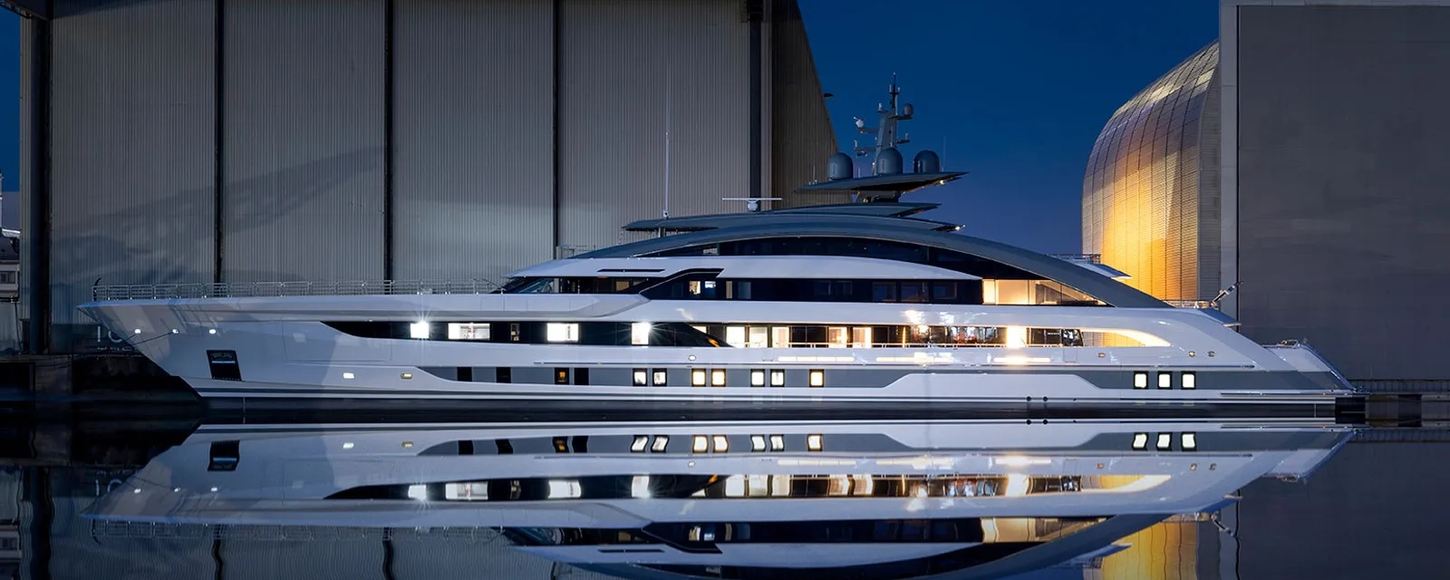
- Yacht Charter Fleet
Heesen deliver 80m superyacht GENESIS to her new owner
- Share this on Facebook
- Share this on X
- Share via Email
By Katie Scott 4 September 2023
Dutch shipyard Heesen has successfully delivered the stunning 80m (262ft) superyacht GENESIS to her new owner, setting a new benchmark for the yard as the biggest yacht they have built to date.
Surpassing the previous record holders of Galactica Super Nova at 70m (229.6ft) and charter yacht ILLUSION at 65m (213ft), the new flagship is a custom-built motor yacht with design collaborations from Van Oossanen Naval Architects, Winch Design, and Sinot Yacht Architecture and Design. Embodying the classic, sporty DNA of the Heesen fleet, GENESIS is undeniably a true Heesen superyacht but with a contemporary and almost futuristic twist on previous builds.
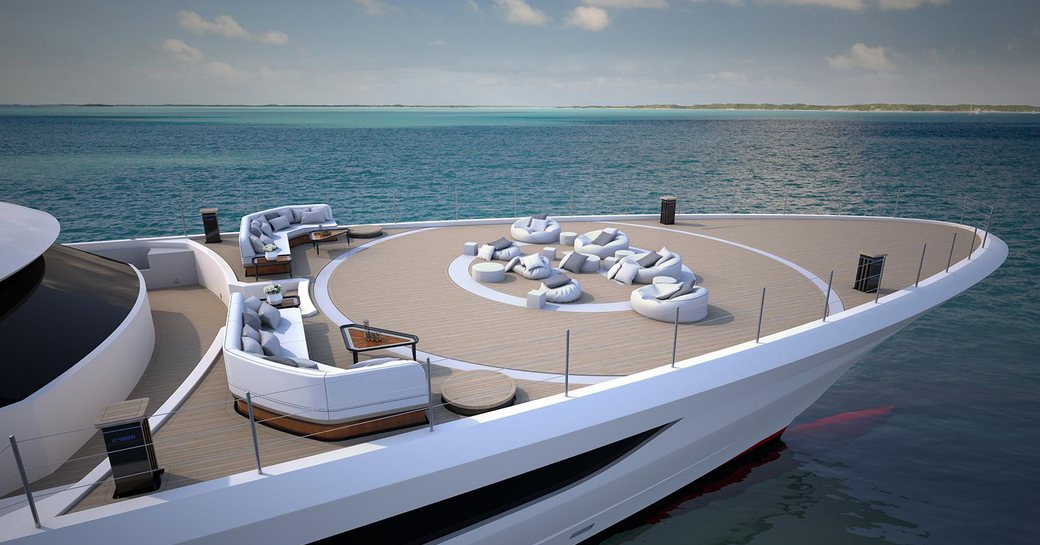
Sporting a six-cabin layout, superyacht GENESIS hosts an army of indulgent features and amenities including a fully certified touch-and-go helipad that can also transform into an outdoor cinema, a glass-bottomed swimming pool, abundant exterior deck space for socializing and relaxing in the Mediterranean sun, plus an on-deck Jacuzzi and WiFi connectivity.

Enabling the owner and their guests seamless access to the sea, motor yacht GENESIS has a generous beach club environment with a wet bar, in addition to plenty of storage for adrenaline-fuelled water toys.
Currently, it is not expected that M/Y GENESIS will be made available for charter. However, if you’re interested in chartering a yacht of a similar caliber, you can view and compare all Heesen superyachts for charter .
For more details on booking a luxury yacht charter , speak to your preferred yacht charter broker today.
Heesen yachts for charter

50m Heesen 2021
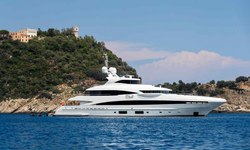
51m Heesen 2014 / 2023
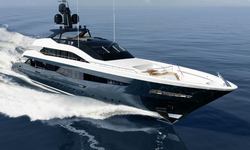
51m Heesen 2018
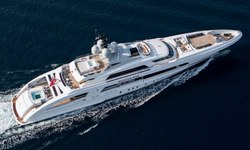
65m Heesen 2013 / 2019
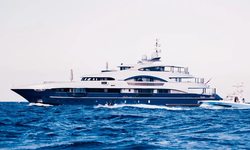
55m Heesen 2011 / 2022
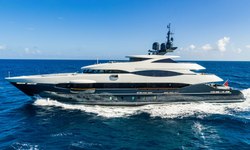
55m Heesen 2012 / 2018
- READ MORE ABOUT:
RELATED STORIES
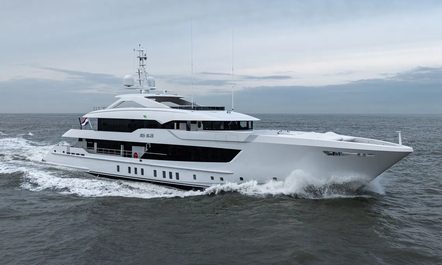
Previous Post
Bilgin Yachts unveils first look images of Project Ame interiors
Immerse yourself in an indulgent Caribbean yacht charter with M/Y GALAXY

EDITOR'S PICK

Latest News
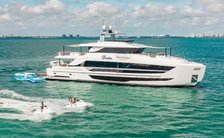
1 March 2024
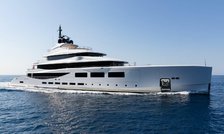
29 February 2024
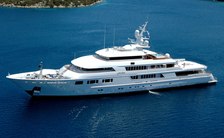
- See All News
Yacht Reviews

- See All Reviews
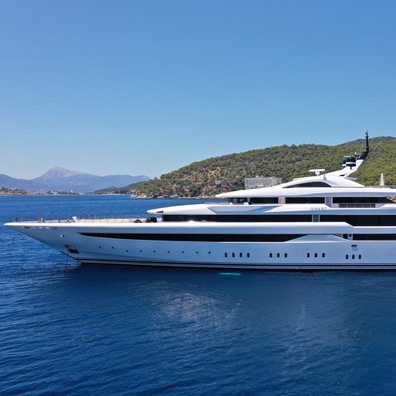
Charter Yacht of the week
Join our newsletter
Useful yacht charter news, latest yachts and expert advice, sent out every fortnight.
Please enter a valid e-mail
Thanks for subscribing
Featured Luxury Yachts for Charter
This is a small selection of the global luxury yacht charter fleet, with 3570 motor yachts, sail yachts, explorer yachts and catamarans to choose from including superyachts and megayachts, the world is your oyster. Why search for your ideal yacht charter vacation anywhere else?

136m | Lurssen
from $4,340,000 p/week ♦︎
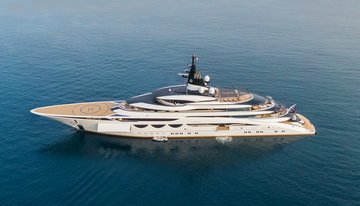
115m | Lurssen
from $2,809,000 p/week ♦︎
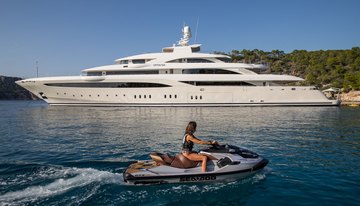
85m | Golden Yachts
from $972,000 p/week ♦︎
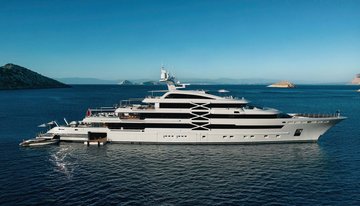
88m | Golden Yachts
from $1,189,000 p/week ♦︎
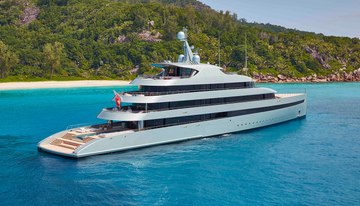
84m | Feadship
from $1,081,000 p/week ♦︎

93m | Feadship
from $1,513,000 p/week ♦︎

Maltese Falcon
88m | Perini Navi
from $490,000 p/week
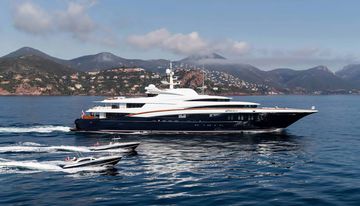
76m | Oceanco
from $857,000 p/week ♦︎
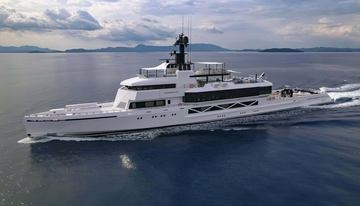
85m | SilverYachts
from $960,000 p/week
As Featured In
The YachtCharterFleet Difference
YachtCharterFleet makes it easy to find the yacht charter vacation that is right for you. We combine thousands of yacht listings with local destination information, sample itineraries and experiences to deliver the world's most comprehensive yacht charter website.
San Francisco
- Like us on Facebook
- Follow us on Twitter
- Follow us on Instagram
- Find us on LinkedIn
- Add My Yacht
- Affiliates & Partners
Popular Destinations & Events
- St Tropez Yacht Charter
- Monaco Yacht Charter
- St Barts Yacht Charter
- Greece Yacht Charter
- Mykonos Yacht Charter
- Caribbean Yacht Charter
Featured Charter Yachts
- Maltese Falcon Yacht Charter
- Wheels Yacht Charter
- Victorious Yacht Charter
- Andrea Yacht Charter
- Titania Yacht Charter
- Ahpo Yacht Charter
Receive our latest offers, trends and stories direct to your inbox.
Please enter a valid e-mail.
Thanks for subscribing.
Search for Yachts, Destinations, Events, News... everything related to Luxury Yachts for Charter.
Yachts in your shortlist

Who Owns Which Superyacht? (A Complete Guide)
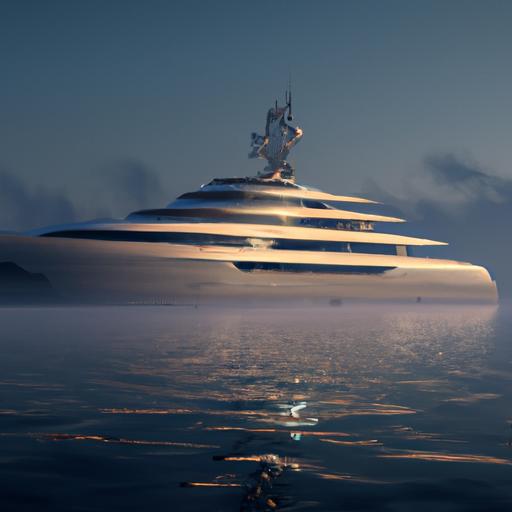
Have you ever wondered who owns the most luxurious, extravagant, and expensive superyachts? Or how much these lavish vessels are worth? In this complete guide, we’ll explore who owns these magnificent vessels, what amenities they hold, and the cost of these incredible yachts.
We’ll also take a look at some of the most expensive superyachts in the world and the notable people behind them.
Get ready to explore the world of superyachts and the people who own them!
Table of Contents
Short Answer
The ownership of superyachts is generally private, so the exact answer to who owns which superyacht is not always publicly available.
However, there are some notable superyacht owners that are known.
For example, Larry Ellison, the co-founder of Oracle, owns the Rising Sun, which is the 11th largest superyacht in the world.
Other notable owners include Russian billionaire Roman Abramovich and Microsoft co-founder Paul Allen.
Overview of Superyachts
The term superyacht refers to a large, expensive recreational boat that is typically owned by the worlds wealthy elite.
These vessels are designed for luxury cruising and typically range in size from 24 meters to over 150 meters, with some even larger.
Superyachts usually feature extensive amenities and creature comforts, such as swimming pools, outdoor bars, movie theaters, helipads, and spas.
Superyachts can range in price from $30 million to an astonishingly high $400 million.
Like most luxury items, the ownership of a superyacht is a status symbol for those who can afford it.
The list of superyacht owners reads like a whos who of billionaires, with names like Russian billionaire Roman Abramovich, Microsoft co-founder Paul Allen, and Amazon founder Jeff Bezos.
The most expensive superyacht in the world is owned by the Emir of Qatar, Sheikh Tamim bin Hamad Al Thani.
While some superyacht owners prefer to keep their vessels out of the public eye, others have made headlines with their extravagant amenities.
Some of the most famous superyachts feature swimming pools, private beaches, helicopter pads, on-board cinemas, and luxurious spas.
In conclusion, owning a superyacht is an exclusive status symbol for the world’s wealthy elite.
These vessels come with hefty price tags that can range from $30 million to over $400 million, and feature some of the most luxurious amenities imaginable.
Notable owners include the Emir of Qatar, Russian billionaire Roman Abramovich, Microsoft co-founder Paul Allen, and Amazon founder Jeff Bezos.
Who are the Owners of Superyachts?

From Hollywood celebrities to tech billionaires, superyacht owners come from all walks of life.
Many of the most well-known owners are billionaires, including Russian billionaire Roman Abramovich, Microsoft co-founder Paul Allen, and Amazon founder Jeff Bezos.
Other notable owners include Hollywood stars such as Leonardo DiCaprio and Johnny Depp.
However, not all superyacht owners are wealthy.
Many are everyday people who have worked hard and saved up to purchase their dream vessel.
Other notable billionaire owners include Oracle co-founder Larry Ellison, Saudi Prince Alwaleed bin Talal, and former US President Donald Trump.
These luxurious vessels come with hefty price tags that can range from $30 million to over $400 million.
For many superyacht owners, their vessels serve as a status symbol of wealth and luxury.
Some owners prefer to keep their yachts out of the public eye, while others have made headlines with their extensive amenities – from swimming pools and helicopter pads to on-board cinemas and spas.
Many of these yachts are designed to the owner’s exact specifications, ensuring that each one is totally unique and reflects the owner’s individual tastes and personality.
Owning a superyacht is an exclusive club, reserved for those with the means and the desire to experience the ultimate in luxury.
Whether they are billionaires or everyday people, superyacht owners are all united in their love of the sea and their appreciation for the finer things in life.
The Most Expensive Superyacht in the World
When it comes to superyachts, Sheikh Tamim bin Hamad Al Thani, the Emir of Qatar, certainly knows how to make a statement.
His luxury vessel, the 463-foot Al Mirqab, holds the title of the world’s most expensive superyacht.
Built in 2008 by German shipbuilder Peters Werft, this impressive yacht is complete with 10 luxurious cabins, a conference room, cinema, and all the amenities one would expect from a vessel of this magnitude.
In addition, the Al Mirqab features a helipad, swimming pool, and even an outdoor Jacuzzi.
With a price tag of over $400 million, the Al Mirqab is one of the most expensive yachts in the world.
In addition to the Emir of Qatar, there are several other notable owners of superyachts.
Russian billionaire Roman Abramovich, Microsoft co-founder Paul Allen, and Amazon founder Jeff Bezos all own luxurious vessels.
Bezos yacht, the aptly named The Flying Fox, is one of the longest superyachts in the world at a staggering 414 feet in length.
The Flying Fox also comes with a host of amenities, such as a helipad, swimming pool, spa, and multiple outdoor entertaining areas.
Bezos also reportedly spent over $400 million on the vessel.
Other notable owners of superyachts include Saudi Prince Alwaleed bin Talal, who owns the $200 million Kingdom 5KR, and Oracle founder Larry Ellison, who owns the $200 million Rising Sun.
There are also many lesser-known owners, such as hedge-fund manager Ken Griffin, who owns the $150 million Aviva, and investor Sir Philip Green, who owns the $100 million Lionheart.
No matter who owns them, superyachts are sure to turn heads.
With their impressive size, luxurious amenities, and hefty price tags, these vessels have become a symbol of wealth and prestige.
Whether its the Emir of Qatar or a lesser-known owner, the worlds superyacht owners are sure to make a statement.

Notable Superyacht Owners

When it comes to the wealthiest and most luxurious owners of superyachts, the list reads like a whos who of the worlds billionaires.
At the top of the list is the Emir of Qatar, Sheikh Tamim bin Hamad Al Thani, who holds the distinction of owning the most expensive superyacht in the world.
Aside from the Emir, other notable owners include Russian billionaire Roman Abramovich, Microsoft co-founder Paul Allen, and Amazon founder Jeff Bezos.
All of these owners have made headlines with their extravagant vessels, which are typically priced between $30 million and $400 million.
The amenities that come with these vessels vary greatly from owner to owner, but they almost always include luxurious swimming pools, helicopter pads, on-board cinemas, and spas.
Some owners opt for more extravagant features, such as submarines, personal submarines, and even their own personal submarines! Other owners prefer to keep their vessels out of the public eye, but for those who prefer a more showy approach, they can certainly make a statement with a superyacht.
No matter who owns the vessel, it’s no surprise that these superyachts are a status symbol among the world’s wealthiest.
Whether you’re trying to impress your peers or just looking to enjoy a luxurious outing, owning a superyacht is the ultimate way to show off your wealth.
What Amenities are Included on Superyachts?
Owning a superyacht is a sign of wealth and prestige, and many of the worlds most prominent billionaires have their own vessels.
The most expensive superyacht in the world is owned by the Emir of Qatar, Sheikh Tamim bin Hamad Al Thani, while other notable owners include Russian billionaire Roman Abramovich, Microsoft co-founder Paul Allen, and Amazon founder Jeff Bezos.
The cost of a superyacht can range from $30 million to over $400 million, but the price tag doesnt quite capture the sheer extravagance and amenities of these vessels.
Superyachts come with all the comforts of home, and then some.
Many owners will equip their vessels with swimming pools, helicopter pads, on-board cinemas, spas, and other luxury amenities.
The interior of a superyacht can be custom-designed to the owners specifications.
Some owners opt for modern, sleek designs, while others prefer a more traditional look.
Many of the most luxurious yachts feature marble floors, walk-in closets, and custom-made furniture.
Some vessels even come with a full-service gym, complete with exercise equipment and trained professionals.
Other amenities may include a library, casino, media room, and private bar.
When it comes to outdoor amenities, superyachts have some of the most impressive features in the world.
Many yachts come with outdoor entertainment areas, complete with full kitchens, dining rooms, and lounge areas.
Some owners even opt for hot tubs or jacuzzis for relaxing afternoons in the sun.
And, of course, there are the jet skis, water slides, and other exciting water activities that come with many of these vessels.
No matter what amenities a superyacht has, it is sure to be an experience like no other.
From the sleek interiors to the luxurious outdoor features, these vessels provide a unique, luxurious experience that is unrivaled on land.
Whether you’re looking for a relaxing escape or an exciting adventure, a superyacht is sure to provide.
How Much Do Superyachts Cost?

When it comes to superyachts, the sky is the limit when it comes to cost.
These luxury vessels come with hefty price tags that can range from anywhere between $30 million to over $400 million.
So, if youre in the market for a superyacht, youre looking at an investment that could easily break the bank.
The cost of a superyacht is driven by a variety of factors, including size, amenities, and customization.
Generally, the larger the yacht, the more expensive it will be.
Superyachts typically range in size from 100 feet to over 200 feet, and they can be as wide as 40 feet.
The bigger the yacht, the more luxurious features and amenities it will have.
Amenities also play a significant role in the cost of a superyacht.
While some owners prefer to keep their yachts out of the public eye, others have made headlines with their extensive amenities.
From swimming pools and helicopter pads to on-board cinemas and spas, the sky is the limit when it comes to customizing a superyacht.
The more amenities a superyacht has, the more expensive it will be.
Finally, customization is another major factor that will drive up the cost of a superyacht.
Many luxury vessels have custom-designed interiors that are tailored to the owners tastes.
From custom furniture and artwork to lighting and audio systems, the cost of a superyacht can quickly escalate depending on the level of customization.
In short, the cost of a superyacht can vary widely depending on its size, amenities, and customization.
While some may be able to get away with spending a few million dollars, others may end up spending hundreds of millions of dollars on their dream yacht.
No matter what your budget is, its important to do your research and find out exactly what youre getting for your money before signing on the dotted line.
Keeping Superyachts Out of the Public Eye
When it comes to owning a superyacht, some owners prefer to keep their vessels out of the public eye.
Understandably, these individuals are concerned with privacy and discretion, and therefore tend to take measures to ensure their yachts are not visible to outsiders.
For instance, some superyacht owners opt to keep their vessels in private marinas, away from the public areas of larger ports.
Additionally, some yacht owners may choose to hire security guards to patrol and protect their vessels while they are moored or sailing.
In addition to physical security, some superyacht owners also use technology to keep their vessels out of the public eye.
For example, a yacht owner may choose to install a satellite-based communications system that allows them to keep their vessel completely off-radar.
This system works by bouncing signals off satellites rather than transmitting them, making it virtually impossible for anyone to track the yachts movements.
Finally, some superyacht owners also choose to limit the number of people who have access to their vessels.
For instance, the owner may only allow family members and close friends to board the yacht.
Additionally, the owner may choose to employ a limited number of staff to help maintain the vessel and keep it running smoothly.
These individuals may be required to sign non-disclosure agreements to ensure they do not disclose any information about the yacht or its owner.
Overall, while some superyacht owners may choose to keep their vessels out of the public eye, there are still plenty of other ways to show off the opulence associated with owning a superyacht.
From swimming pools and helicopter pads to on-board cinemas and spas, there are many luxurious amenities that can make a superyacht the envy of any jet setter.
Final Thoughts
Superyachts are a symbol of luxury and status, and the list of yacht owners reads like a who’s who of billionaires.
From the Emir of Qatar’s world-record breaking $400 million yacht to Microsoft co-founder Paul Allen’s vessel with a helicopter pad and on-board spa, the amenities of these luxury vessels are truly stunning.
With prices ranging from $30 million to over $400 million, owning a superyacht is an expensive endeavor.
Whether you’re looking to purchase one or just curious to learn more about the owners and their amenities, this guide will provide you with all the information you need to stay up to date with the superyacht scene.
James Frami
At the age of 15, he and four other friends from his neighborhood constructed their first boat. He has been sailing for almost 30 years and has a wealth of knowledge that he wants to share with others.
Recent Posts
Does Your Boat License Expire? Here's What You Need to Know
Are you a boat owner looking to stay up-to-date on your license requirements? If so, youve come to the right place! In this article, well cover everything you need to know about boat license...
How to Put Skins on Your Boat in Sea of Thieves? (Complete Guide)
There is a unique sense of pride and accomplishment when you show off a boat you customized to your exact specifications. With Sea of Thieves, you can customize your boat to make it look like your...
To revisit this article, select My Account, then View saved stories
Find anything you save across the site in your account
The Haves and the Have-Yachts
By Evan Osnos
In the Victorian era, it was said that the length of a man’s boat, in feet, should match his age, in years. The Victorians would have had some questions at the fortieth annual Palm Beach International Boat Show, which convened this March on Florida’s Gold Coast. A typical offering: a two-hundred-and-three-foot superyacht named Sea Owl, selling secondhand for ninety million dollars. The owner, Robert Mercer, the hedge-fund tycoon and Republican donor, was throwing in furniture and accessories, including several auxiliary boats, a Steinway piano, a variety of frescoes, and a security system that requires fingerprint recognition. Nevertheless, Mercer’s package was a modest one; the largest superyachts are more than five hundred feet, on a scale with naval destroyers, and cost six or seven times what he was asking.
For the small, tight-lipped community around the world’s biggest yachts, the Palm Beach show has the promising air of spring training. On the cusp of the summer season, it affords brokers and builders and owners (or attendants from their family offices) a chance to huddle over the latest merchandise and to gather intelligence: Who’s getting in? Who’s getting out? And, most pressingly, who’s ogling a bigger boat?
On the docks, brokers parse the crowd according to a taxonomy of potential. Guests asking for tours face a gantlet of greeters, trained to distinguish “superrich clients” from “ineligible visitors,” in the words of Emma Spence, a former greeter at the Palm Beach show. Spence looked for promising clues (the right shoes, jewelry, pets) as well as for red flags (cameras, ornate business cards, clothes with pop-culture references). For greeters from elsewhere, Palm Beach is a challenging assignment. Unlike in Europe, where money can still produce some visible tells—Hunter Wellies, a Barbour jacket—the habits of wealth in Florida offer little that’s reliable. One colleague resorted to binoculars, to spot a passerby with a hundred-thousand-dollar watch. According to Spence, people judged to have insufficient buying power are quietly marked for “dissuasion.”
For the uninitiated, a pleasure boat the length of a football field can be bewildering. Andy Cohen, the talk-show host, recalled his first visit to a superyacht owned by the media mogul Barry Diller: “I was like the Beverly Hillbillies.” The boats have grown so vast that some owners place unique works of art outside the elevator on each deck, so that lost guests don’t barge into the wrong stateroom.
At the Palm Beach show, I lingered in front of a gracious vessel called Namasté, until I was dissuaded by a wooden placard: “Private yacht, no boarding, no paparazzi.” In a nearby berth was a two-hundred-and-eighty-foot superyacht called Bold, which was styled like a warship, with its own helicopter hangar, three Sea-Doos, two sailboats, and a color scheme of gunmetal gray. The rugged look is a trend; “explorer” vessels, equipped to handle remote journeys, are the sport-utility vehicles of yachting.
If you hail from the realm of ineligible visitors, you may not be aware that we are living through the “greatest boom in the yacht business that’s ever existed,” as Bob Denison—whose firm, Denison Yachting, is one of the world’s largest brokers—told me. “Every broker, every builder, up and down the docks, is having some of the best years they’ve ever experienced.” In 2021, the industry sold a record eight hundred and eighty-seven superyachts worldwide, nearly twice the previous year’s total. With more than a thousand new superyachts on order, shipyards are so backed up that clients unaccustomed to being told no have been shunted to waiting lists.
One reason for the increased demand for yachts is the pandemic. Some buyers invoke social distancing; others, an existential awakening. John Staluppi, of Palm Beach Gardens, who made a fortune from car dealerships, is looking to upgrade from his current, sixty-million-dollar yacht. “When you’re forty or fifty years old, you say, ‘I’ve got plenty of time,’ ” he told me. But, at seventy-five, he is ready to throw in an extra fifteen million if it will spare him three years of waiting. “Is your life worth five million dollars a year? I think so,” he said. A deeper reason for the demand is the widening imbalance of wealth. Since 1990, the United States’ supply of billionaires has increased from sixty-six to more than seven hundred, even as the median hourly wage has risen only twenty per cent. In that time, the number of truly giant yachts—those longer than two hundred and fifty feet—has climbed from less than ten to more than a hundred and seventy. Raphael Sauleau, the C.E.O. of Fraser Yachts, told me bluntly, “ COVID and wealth—a perfect storm for us.”
And yet the marina in Palm Beach was thrumming with anxiety. Ever since the Russian President, Vladimir Putin, launched his assault on Ukraine, the superyacht world has come under scrutiny. At a port in Spain, a Ukrainian engineer named Taras Ostapchuk, working aboard a ship that he said was owned by a Russian arms dealer, threw open the sea valves and tried to sink it to the bottom of the harbor. Under arrest, he told a judge, “I would do it again.” Then he returned to Ukraine and joined the military. Western allies, in the hope of pressuring Putin to withdraw, have sought to cut off Russian oligarchs from businesses and luxuries abroad. “We are coming for your ill-begotten gains,” President Joe Biden declared, in his State of the Union address.
Nobody can say precisely how many of Putin’s associates own superyachts—known to professionals as “white boats”—because the white-boat world is notoriously opaque. Owners tend to hide behind shell companies, registered in obscure tax havens, attended by private bankers and lawyers. But, with unusual alacrity, authorities have used subpoenas and police powers to freeze boats suspected of having links to the Russian élite. In Spain, the government detained a hundred-and-fifty-million-dollar yacht associated with Sergei Chemezov, the head of the conglomerate Rostec, whose bond with Putin reaches back to their time as K.G.B. officers in East Germany. (As in many cases, the boat is not registered to Chemezov; the official owner is a shell company connected to his stepdaughter, a teacher whose salary is likely about twenty-two hundred dollars a month.) In Germany, authorities impounded the world’s most voluminous yacht, Dilbar, for its ties to the mining-and-telecom tycoon Alisher Usmanov. And in Italy police have grabbed a veritable armada, including a boat owned by one of Russia’s richest men, Alexei Mordashov, and a colossus suspected of belonging to Putin himself, the four-hundred-and-fifty-nine-foot Scheherazade.
In Palm Beach, the yachting community worried that the same scrutiny might be applied to them. “Say your superyacht is in Asia, and there’s some big conflict where China invades Taiwan,” Denison told me. “China could spin it as ‘Look at these American oligarchs!’ ” He wondered if the seizures of superyachts marked a growing political animus toward the very rich. “Whenever things are economically or politically disruptive,” he said, “it’s hard to justify taking an insane amount of money and just putting it into something that costs a lot to maintain, depreciates, and is only used for having a good time.”
Nobody pretends that a superyacht is a productive place to stash your wealth. In a column this spring headlined “ A SUPERYACHT IS A TERRIBLE ASSET ,” the Financial Times observed, “Owning a superyacht is like owning a stack of 10 Van Goghs, only you are holding them over your head as you tread water, trying to keep them dry.”
Not so long ago, status transactions among the élite were denominated in Old Masters and in the sculptures of the Italian Renaissance. Joseph Duveen, the dominant art dealer of the early twentieth century, kept the oligarchs of his day—Andrew Mellon, Jules Bache, J. P. Morgan—jockeying over Donatellos and Van Dycks. “When you pay high for the priceless,” he liked to say, “you’re getting it cheap.”

Link copied
In the nineteen-fifties, the height of aspirational style was fine French furniture—F.F.F., as it became known in certain precincts of Fifth Avenue and Palm Beach. Before long, more and more money was going airborne. Hugh Hefner, a pioneer in the private-jet era, decked out a plane he called Big Bunny, where he entertained Elvis Presley, Raquel Welch, and James Caan. The oil baron Armand Hammer circled the globe on his Boeing 727, paying bribes and recording evidence on microphones hidden in his cufflinks. But, once it seemed that every plutocrat had a plane, the thrill was gone.
In any case, an airplane is just transportation. A big ship is a floating manse, with a hierarchy written right into the nomenclature. If it has a crew working aboard, it’s a yacht. If it’s more than ninety-eight feet, it’s a superyacht. After that, definitions are debated, but people generally agree that anything more than two hundred and thirty feet is a megayacht, and more than two hundred and ninety-five is a gigayacht. The world contains about fifty-four hundred superyachts, and about a hundred gigayachts.
For the moment, a gigayacht is the most expensive item that our species has figured out how to own. In 2019, the hedge-fund billionaire Ken Griffin bought a quadruplex on Central Park South for two hundred and forty million dollars, the highest price ever paid for a home in America. In May, an unknown buyer spent about a hundred and ninety-five million on an Andy Warhol silk-screen portrait of Marilyn Monroe. In luxury-yacht terms, those are ordinary numbers. “There are a lot of boats in build well over two hundred and fifty million dollars,” Jamie Edmiston, a broker in Monaco and London, told me. His buyers are getting younger and more inclined to spend long stretches at sea. “High-speed Internet, telephony, modern communications have made working easier,” he said. “Plus, people made a lot more money earlier in life.”
A Silicon Valley C.E.O. told me that one appeal of boats is that they can “absorb the most excess capital.” He explained, “Rationally, it would seem to make sense for people to spend half a billion dollars on their house and then fifty million on the boat that they’re on for two weeks a year, right? But it’s gone the other way. People don’t want to live in a hundred-thousand-square-foot house. Optically, it’s weird. But a half-billion-dollar boat, actually, is quite nice.” Staluppi, of Palm Beach Gardens, is content to spend three or four times as much on his yachts as on his homes. Part of the appeal is flexibility. “If you’re on your boat and you don’t like your neighbor, you tell the captain, ‘Let’s go to a different place,’ ” he said. On land, escaping a bad neighbor requires more work: “You got to try and buy him out or make it uncomfortable or something.” The preference for sea-based investment has altered the proportions of taste. Until recently, the Silicon Valley C.E.O. said, “a fifty-metre boat was considered a good-sized boat. Now that would be a little bit embarrassing.” In the past twenty years, the length of the average luxury yacht has grown by a third, to a hundred and sixty feet.
Thorstein Veblen, the economist who published “The Theory of the Leisure Class,” in 1899, argued that the power of “conspicuous consumption” sprang not from artful finery but from sheer needlessness. “In order to be reputable,” he wrote, “it must be wasteful.” In the yachting world, stories circulate about exotic deliveries by helicopter or seaplane: Dom Pérignon, bagels from Zabar’s, sex workers, a rare melon from the island of Hokkaido. The industry excels at selling you things that you didn’t know you needed. When you flip through the yachting press, it’s easy to wonder how you’ve gone this long without a personal submarine, or a cryosauna that “blasts you with cold” down to minus one hundred and ten degrees Celsius, or the full menagerie of “exclusive leathers,” such as eel and stingray.
But these shrines to excess capital exist in a conditional state of visibility: they are meant to be unmistakable to a slender stratum of society—and all but unseen by everyone else. Even before Russia’s invasion of Ukraine, the yachting community was straining to manage its reputation as a gusher of carbon emissions (one well-stocked diesel yacht is estimated to produce as much greenhouse gas as fifteen hundred passenger cars), not to mention the fact that the world of white boats is overwhelmingly white. In a candid aside to a French documentarian, the American yachtsman Bill Duker said, “If the rest of the world learns what it’s like to live on a yacht like this, they’re gonna bring back the guillotine.” The Dutch press recently reported that Jeff Bezos, the founder of Amazon, was building a sailing yacht so tall that the city of Rotterdam might temporarily dismantle a bridge that had survived the Nazis in order to let the boat pass to the open sea. Rotterdammers were not pleased. On Facebook, a local man urged people to “take a box of rotten eggs with you and let’s throw them en masse at Jeff’s superyacht when it sails through.” At least thirteen thousand people expressed interest. Amid the uproar, a deputy mayor announced that the dismantling plan had been abandoned “for the time being.” (Bezos modelled his yacht partly on one owned by his friend Barry Diller, who has hosted him many times. The appreciation eventually extended to personnel, and Bezos hired one of Diller’s captains.)
As social media has heightened the scrutiny of extraordinary wealth, some of the very people who created those platforms have sought less observable places to spend it. But they occasionally indulge in some coded provocation. In 2006, when the venture capitalist Tom Perkins unveiled his boat in Istanbul, most passersby saw it adorned in colorful flags, but people who could read semaphore were able to make out a message: “Rarely does one have the privilege to witness vulgar ostentation displayed on such a scale.” As a longtime owner told me, “If you don’t have some guilt about it, you’re a rat.”
Alex Finley, a former C.I.A. officer who has seen yachts proliferate near her home in Barcelona, has weighed the superyacht era and its discontents in writings and on Twitter, using the hashtag #YachtWatch. “To me, the yachts are not just yachts,” she told me. “In Russia’s case, these are the embodiment of oligarchs helping a dictator destabilize our democracy while utilizing our democracy to their benefit.” But, Finley added, it’s a mistake to think the toxic symbolism applies only to Russia. “The yachts tell a whole story about a Faustian capitalism—this idea that we’re ready to sell democracy for short-term profit,” she said. “They’re registered offshore. They use every loophole that we’ve put in place for illicit money and tax havens. So they play a role in this battle, writ large, between autocracy and democracy.”
After a morning on the docks at the Palm Beach show, I headed to a more secluded marina nearby, which had been set aside for what an attendant called “the really big hardware.” It felt less like a trade show than like a boutique resort, with a swimming pool and a terrace restaurant. Kevin Merrigan, a relaxed Californian with horn-rimmed glasses and a high forehead pinked by the sun, was waiting for me at the stern of Unbridled, a superyacht with a brilliant blue hull that gave it the feel of a personal cruise ship. He invited me to the bridge deck, where a giant screen showed silent video of dolphins at play.
Merrigan is the chairman of the brokerage Northrop & Johnson, which has ridden the tide of growing boats and wealth since 1949. Lounging on a sofa mounded with throw pillows, he projected a nearly postcoital level of contentment. He had recently sold the boat we were on, accepted an offer for a behemoth beside us, and begun negotiating the sale of yet another. “This client owns three big yachts,” he said. “It’s a hobby for him. We’re at a hundred and ninety-one feet now, and last night he said, ‘You know, what do you think about getting a two hundred and fifty?’ ” Merrigan laughed. “And I was, like, ‘Can’t you just have dinner?’ ”
Among yacht owners, there are some unwritten rules of stratification: a Dutch-built boat will hold its value better than an Italian; a custom design will likely get more respect than a “series yacht”; and, if you want to disparage another man’s boat, say that it looks like a wedding cake. But, in the end, nothing says as much about a yacht, or its owner, as the delicate matter of L.O.A.—length over all.
The imperative is not usually length for length’s sake (though the longtime owner told me that at times there is an aspect of “phallic sizing”). “L.O.A.” is a byword for grandeur. In most cases, pleasure yachts are permitted to carry no more than twelve passengers, a rule set by the International Convention for the Safety of Life at Sea, which was conceived after the sinking of the Titanic. But those limits do not apply to crew. “So, you might have anything between twelve and fifty crew looking after those twelve guests,” Edmiston, the broker, said. “It’s a level of service you cannot really contemplate until you’ve been fortunate enough to experience it.”
As yachts have grown more capacious, and the limits on passengers have not, more and more space on board has been devoted to staff and to novelties. The latest fashions include IMAX theatres, hospital equipment that tests for dozens of pathogens, and ski rooms where guests can suit up for a helicopter trip to a mountaintop. The longtime owner, who had returned the previous day from his yacht, told me, “No one today—except for assholes and ridiculous people—lives on land in what you would call a deep and broad luxe life. Yes, people have nice houses and all of that, but it’s unlikely that the ratio of staff to them is what it is on a boat.” After a moment, he added, “Boats are the last place that I think you can get away with it.”
Even among the truly rich, there is a gap between the haves and the have-yachts. One boating guest told me about a conversation with a famous friend who keeps one of the world’s largest yachts. “He said, ‘The boat is the last vestige of what real wealth can do.’ What he meant is, You have a chef, and I have a chef. You have a driver, and I have a driver. You can fly privately, and I fly privately. So, the one place where I can make clear to the world that I am in a different fucking category than you is the boat.”
After Merrigan and I took a tour of Unbridled, he led me out to a waiting tender, staffed by a crew member with an earpiece on a coil. The tender, Merrigan said, would ferry me back to the busy main dock of the Palm Beach show. We bounced across the waves under a pristine sky, and pulled into the marina, where my fellow-gawkers were still trying to talk their way past the greeters. As I walked back into the scrum, Namasté was still there, but it looked smaller than I remembered.
For owners and their guests, a white boat provides a discreet marketplace for the exchange of trust, patronage, and validation. To diagram the precise workings of that trade—the customs and anxieties, strategies and slights—I talked to Brendan O’Shannassy, a veteran captain who is a curator of white-boat lore. Raised in Western Australia, O’Shannassy joined the Navy as a young man, and eventually found his way to skippering some of the world’s biggest yachts. He has worked for Paul Allen, the late co-founder of Microsoft, along with a few other billionaires he declines to name. Now in his early fifties, with patient green eyes and tufts of curly brown hair, O’Shannassy has had a vantage from which to monitor the social traffic. “It’s all gracious, and everyone’s kiss-kiss,” he said. “But there’s a lot going on in the background.”
O’Shannassy once worked for an owner who limited the number of newspapers on board, so that he could watch his guests wait and squirm. “It was a mind game amongst the billionaires. There were six couples, and three newspapers,” he said, adding, “They were ranking themselves constantly.” On some boats, O’Shannassy has found himself playing host in the awkward minutes after guests arrive. “A lot of them are savants, but some are very un-socially aware,” he said. “They need someone to be social and charming for them.” Once everyone settles in, O’Shannassy has learned, there is often a subtle shift, when a mogul or a politician or a pop star starts to loosen up in ways that are rarely possible on land. “Your security is relaxed—they’re not on your hip,” he said. “You’re not worried about paparazzi. So you’ve got all this extra space, both mental and physical.”
O’Shannassy has come to see big boats as a space where powerful “solar systems” converge and combine. “It is implicit in every interaction that their sharing of information will benefit both parties; it is an obsession with billionaires to do favours for each other. A referral, an introduction, an insight—it all matters,” he wrote in “Superyacht Captain,” a new memoir. A guest told O’Shannassy that, after a lavish display of hospitality, he finally understood the business case for buying a boat. “One deal secured on board will pay it all back many times over,” the guest said, “and it is pretty hard to say no after your kids have been hosted so well for a week.”
Take the case of David Geffen, the former music and film executive. He is long retired, but he hosts friends (and potential friends) on the four-hundred-and-fifty-four-foot Rising Sun, which has a double-height cinema, a spa and salon, and a staff of fifty-seven. In 2017, shortly after Barack and Michelle Obama departed the White House, they were photographed on Geffen’s boat in French Polynesia, accompanied by Bruce Springsteen, Oprah Winfrey, Tom Hanks, and Rita Wilson. For Geffen, the boat keeps him connected to the upper echelons of power. There are wealthier Americans, but not many of them have a boat so delectable that it can induce both a Democratic President and the workingman’s crooner to risk the aroma of hypocrisy.
The binding effect pays dividends for guests, too. Once people reach a certain level of fame, they tend to conclude that its greatest advantage is access. Spend a week at sea together, lingering over meals, observing one another floundering on a paddleboard, and you have something of value for years to come. Call to ask for an investment, an introduction, an internship for a wayward nephew, and you’ll at least get the call returned. It’s a mutually reinforcing circle of validation: she’s here, I’m here, we’re here.
But, if you want to get invited back, you are wise to remember your part of the bargain. If you work with movie stars, bring fresh gossip. If you’re on Wall Street, bring an insight or two. Don’t make the transaction obvious, but don’t forget why you’re there. “When I see the guest list,” O’Shannassy wrote, “I am aware, even if not all names are familiar, that all have been chosen for a purpose.”
For O’Shannassy, there is something comforting about the status anxieties of people who have everything. He recalled a visit to the Italian island of Sardinia, where his employer asked him for a tour of the boats nearby. Riding together on a tender, they passed one colossus after another, some twice the size of the owner’s superyacht. Eventually, the man cut the excursion short. “Take me back to my yacht, please,” he said. They motored in silence for a while. “There was a time when my yacht was the most beautiful in the bay,” he said at last. “How do I keep up with this new money?”
The summer season in the Mediterranean cranks up in May, when the really big hardware heads east from Florida and the Caribbean to escape the coming hurricanes, and reconvenes along the coasts of France, Italy, and Spain. At the center is the Principality of Monaco, the sun-washed tax haven that calls itself the “world’s capital of advanced yachting.” In Monaco, which is among the richest countries on earth, superyachts bob in the marina like bath toys.

The nearest hotel room at a price that would not get me fired was an Airbnb over the border with France. But an acquaintance put me on the phone with the Yacht Club de Monaco, a members-only establishment created by the late monarch His Serene Highness Prince Rainier III, whom the Web site describes as “a true visionary in every respect.” The club occasionally rents rooms—“cabins,” as they’re called—to visitors in town on yacht-related matters. Claudia Batthyany, the elegant director of special projects, showed me to my cabin and later explained that the club does not aspire to be a hotel. “We are an association ,” she said. “Otherwise, it becomes”—she gave a gentle wince—“not that exclusive.”
Inside my cabin, I quickly came to understand that I would never be fully satisfied anywhere else again. The space was silent and aromatically upscale, bathed in soft sunlight that swept through a wall of glass overlooking the water. If I was getting a sudden rush of the onboard experience, that was no accident. The clubhouse was designed by the British architect Lord Norman Foster to evoke the opulent indulgence of ocean liners of the interwar years, like the Queen Mary. I found a handwritten welcome note, on embossed club stationery, set alongside an orchid and an assemblage of chocolate truffles: “The whole team remains at your entire disposal to make your stay a wonderful experience. Yours sincerely, Service Members.” I saluted the nameless Service Members, toiling for the comfort of their guests. Looking out at the water, I thought, intrusively, of a line from Santiago, Hemingway’s old man of the sea. “Do not think about sin,” he told himself. “It is much too late for that and there are people who are paid to do it.”
I had been assured that the Service Members would cheerfully bring dinner, as they might on board, but I was eager to see more of my surroundings. I consulted the club’s summer dress code. It called for white trousers and a blue blazer, and it discouraged improvisation: “No pocket handkerchief is to be worn above the top breast-pocket bearing the Club’s coat of arms.” The handkerchief rule seemed navigable, but I did not possess white trousers, so I skirted the lobby and took refuge in the bar. At a table behind me, a man with flushed cheeks and a British accent had a head start. “You’re a shitty negotiator,” he told another man, with a laugh. “Maybe sales is not your game.” A few seats away, an American woman was explaining to a foreign friend how to talk with conservatives: “If they say, ‘The earth is flat,’ you say, ‘Well, I’ve sailed around it, so I’m not so sure about that.’ ”
In the morning, I had an appointment for coffee with Gaëlle Tallarida, the managing director of the Monaco Yacht Show, which the Daily Mail has called the “most shamelessly ostentatious display of yachts in the world.” Tallarida was not born to that milieu; she grew up on the French side of the border, swimming at public beaches with a view of boats sailing from the marina. But she had a knack for highly organized spectacle. While getting a business degree, she worked on a student theatre festival and found it thrilling. Afterward, she got a job in corporate events, and in 1998 she was hired at the yacht show as a trainee.
With this year’s show five months off, Tallarida was already getting calls about what she described as “the most complex part of my work”: deciding which owners get the most desirable spots in the marina. “As you can imagine, they’ve got very big egos,” she said. “On top of that, I’m a woman. They are sometimes arriving and saying”—she pointed into the distance, pantomiming a decree—“ ‘O.K., I want that! ’ ”
Just about everyone wants his superyacht to be viewed from the side, so that its full splendor is visible. Most harbors, however, have a limited number of berths with a side view; in Monaco, there are only twelve, with prime spots arrayed along a concrete dike across from the club. “We reserve the dike for the biggest yachts,” Tallarida said. But try telling that to a man who blew his fortune on a small superyacht.
Whenever possible, Tallarida presents her verdicts as a matter of safety: the layout must insure that “in case of an emergency, any boat can go out.” If owners insist on preferential placement, she encourages a yachting version of the Golden Rule: “What if, next year, I do that to you? Against you?”
Does that work? I asked. She shrugged. “They say, ‘Eh.’ ” Some would gladly risk being a victim next year in order to be a victor now. In the most awful moment of her career, she said, a man who was unhappy with his berth berated her face to face. “I was in the office, feeling like a little girl, with my daddy shouting at me. I said, ‘O.K., O.K., I’m going to give you the spot.’ ”
Securing just the right place, it must be said, carries value. Back at the yacht club, I was on my terrace, enjoying the latest delivery by the Service Members—an airy French omelette and a glass of preternaturally fresh orange juice. I thought guiltily of my wife, at home with our kids, who had sent a text overnight alerting me to a maintenance issue that she described as “a toilet debacle.”
Then I was distracted by the sight of a man on a yacht in the marina below. He was staring up at me. I went back to my brunch, but, when I looked again, there he was—a middle-aged man, on a mid-tier yacht, juiceless, on a greige banquette, staring up at my perfect terrace. A surprising sensation started in my chest and moved outward like a warm glow: the unmistakable pang of superiority.
That afternoon, I made my way to the bar, to meet the yacht club’s general secretary, Bernard d’Alessandri, for a history lesson. The general secretary was up to code: white trousers, blue blazer, club crest over the heart. He has silver hair, black eyebrows, and a tan that evokes high-end leather. “I was a sailing teacher before this,” he said, and gestured toward the marina. “It was not like this. It was a village.”
Before there were yacht clubs, there were jachten , from the Dutch word for “hunt.” In the seventeenth century, wealthy residents of Amsterdam created fast-moving boats to meet incoming cargo ships before they hit port, in order to check out the merchandise. Soon, the Dutch owners were racing one another, and yachting spread across Europe. After a visit to Holland in 1697, Peter the Great returned to Russia with a zeal for pleasure craft, and he later opened Nevsky Flot, one of the world’s first yacht clubs, in St. Petersburg.
For a while, many of the biggest yachts were symbols of state power. In 1863, the viceroy of Egypt, Isma’il Pasha, ordered up a steel leviathan called El Mahrousa, which was the world’s longest yacht for a remarkable hundred and nineteen years, until the title was claimed by King Fahd of Saudi Arabia. In the United States, Franklin Delano Roosevelt received guests aboard the U.S.S. Potomac, which had a false smokestack containing a hidden elevator, so that the President could move by wheelchair between decks.
But yachts were finding new patrons outside politics. In 1954, the Greek shipping baron Aristotle Onassis bought a Canadian Navy frigate and spent four million dollars turning it into Christina O, which served as his home for months on end—and, at various times, as a home to his companions Maria Callas, Greta Garbo, and Jacqueline Kennedy. Christina O had its flourishes—a Renoir in the master suite, a swimming pool with a mosaic bottom that rose to become a dance floor—but none were more distinctive than the appointments in the bar, which included whales’ teeth carved into pornographic scenes from the Odyssey and stools upholstered in whale foreskins.
For Onassis, the extraordinary investments in Christina O were part of an epic tit for tat with his archrival, Stavros Niarchos, a fellow shipping tycoon, which was so entrenched that it continued even after Onassis’s death, in 1975. Six years later, Niarchos launched a yacht fifty-five feet longer than Christina O: Atlantis II, which featured a swimming pool on a gyroscope so that the water would not slosh in heavy seas. Atlantis II, now moored in Monaco, sat before the general secretary and me as we talked.
Over the years, d’Alessandri had watched waves of new buyers arrive from one industry after another. “First, it was the oil. After, it was the telecommunications. Now, they are making money with crypto,” he said. “And, each time, it’s another size of the boat, another design.” What began as symbols of state power had come to represent more diffuse aristocracies—the fortunes built on carbon, capital, and data that migrated across borders. As early as 1908, the English writer G. K. Chesterton wondered what the big boats foretold of a nation’s fabric. “The poor man really has a stake in the country,” he wrote. “The rich man hasn’t; he can go away to New Guinea in a yacht.”
Each iteration of fortune left its imprint on the industry. Sheikhs, who tend to cruise in the world’s hottest places, wanted baroque indoor spaces and were uninterested in sundecks. Silicon Valley favored acres of beige, more Sonoma than Saudi. And buyers from Eastern Europe became so abundant that shipyards perfected the onboard banya , a traditional Russian sauna stocked with birch and eucalyptus. The collapse of the Soviet Union, in 1991, had minted a generation of new billionaires, whose approach to money inspired a popular Russian joke: One oligarch brags to another, “Look at this new tie. It cost me two hundred bucks!” To which the other replies, “You moron. You could’ve bought the same one for a thousand!”
In 1998, around the time that the Russian economy imploded, the young tycoon Roman Abramovich reportedly bought a secondhand yacht called Sussurro—Italian for “whisper”—which had been so carefully engineered for speed that each individual screw was weighed before installation. Soon, Russians were competing to own the costliest ships. “If the most expensive yacht in the world was small, they would still want it,” Maria Pevchikh, a Russian investigator who helps lead the Anti-Corruption Foundation, told me.
In 2008, a thirty-six-year-old industrialist named Andrey Melnichenko spent some three hundred million dollars on Motor Yacht A, a radical experiment conceived by the French designer Philippe Starck, with a dagger-shaped hull and a bulbous tower topped by a master bedroom set on a turntable that pivots to capture the best view. The shape was ridiculed as “a giant finger pointing at you” and “one of the most hideous vessels ever to sail,” but it marked a new prominence for Russian money at sea. Today, post-Soviet élites are thought to own a fifth of the world’s gigayachts.
Even Putin has signalled his appreciation, being photographed on yachts in the Black Sea resort of Sochi. In an explosive report in 2012, Boris Nemtsov, a former Deputy Prime Minister, accused Putin of amassing a storehouse of outrageous luxuries, including four yachts, twenty homes, and dozens of private aircraft. Less than three years later, Nemtsov was fatally shot while crossing a bridge near the Kremlin. The Russian government, which officially reports that Putin collects a salary of about a hundred and forty thousand dollars and possesses a modest apartment in Moscow, denied any involvement.
Many of the largest, most flamboyant gigayachts are designed in Monaco, at a sleek waterfront studio occupied by the naval architect Espen Øino. At sixty, Øino has a boyish mop and the mild countenance of a country parson. He grew up in a small town in Norway, the heir to a humble maritime tradition. “My forefathers built wooden rowing boats for four generations,” he told me. In the late eighties, he was designing sailboats when his firm won a commission to design a megayacht for Emilio Azcárraga, the autocratic Mexican who built Televisa into the world’s largest Spanish-language broadcaster. Azcárraga was nicknamed El Tigre, for his streak of white hair and his comfort with confrontation; he kept a chair in his office that was unusually high off the ground, so that visitors’ feet dangled like children’s.
In early meetings, Øino recalled, Azcárraga grew frustrated that the ideas were not dazzling enough. “You must understand,” he said. “I don’t go to port very often with my boats, but, when I do, I want my presence to be felt.”
The final design was suitably arresting; after the boat was completed, Øino had no shortage of commissions. In 1998, he was approached by Paul Allen, of Microsoft, to build a yacht that opened the way for the Goliaths that followed. The result, called Octopus, was so large that it contained a submarine marina in its belly, as well as a helicopter hangar that could be converted into an outdoor performance space. Mick Jagger and Bono played on occasion. I asked Øino why owners obsessed with secrecy seem determined to build the world’s most conspicuous machines. He compared it to a luxury car with tinted windows. “People can’t see you, but you’re still in that expensive, impressive thing,” he said. “We all need to feel that we’re important in one way or another.”

In recent months, Øino has seen some of his creations detained by governments in the sanctions campaign. When we spoke, he condemned the news coverage. “Yacht equals Russian equals evil equals money,” he said disdainfully. “It’s a bit tragic, because the yachts have become synonymous with the bad guys in a James Bond movie.”
What about Scheherazade, the giant yacht that U.S. officials have alleged is held by a Russian businessman for Putin’s use? Øino, who designed the ship, rejected the idea. “We have designed two yachts for heads of state, and I can tell you that they’re completely different, in terms of the layout and everything, from Scheherazade.” He meant that the details said plutocrat, not autocrat.
For the time being, Scheherazade and other Øino creations under detention across Europe have entered a strange legal purgatory. As lawyers for the owners battle to keep the ships from being permanently confiscated, local governments are duty-bound to maintain them until a resolution is reached. In a comment recorded by a hot mike in June, Jake Sullivan, the U.S. national-security adviser, marvelled that “people are basically being paid to maintain Russian superyachts on behalf of the United States government.” (It usually costs about ten per cent of a yacht’s construction price to keep it afloat each year. In May, officials in Fiji complained that a detained yacht was costing them more than a hundred and seventy-one thousand dollars a day.)
Stranger still are the Russian yachts on the lam. Among them is Melnichenko’s much maligned Motor Yacht A. On March 9th, Melnichenko was sanctioned by the European Union, and although he denied having close ties to Russia’s leadership, Italy seized one of his yachts—a six-hundred-million-dollar sailboat. But Motor Yacht A slipped away before anyone could grab it. Then the boat turned off the transponder required by international maritime rules, so that its location could no longer be tracked. The last ping was somewhere near the Maldives, before it went dark on the high seas.
The very largest yachts come from Dutch and German shipyards, which have experience in naval vessels, known as “gray boats.” But the majority of superyachts are built in Italy, partly because owners prefer to visit the Mediterranean during construction. (A British designer advises those who are weighing their choices to take the geography seriously, “unless you like schnitzel.”)
In the past twenty-two years, nobody has built more superyachts than the Vitellis, an Italian family whose patriarch, Paolo Vitelli, got his start in the seventies, manufacturing smaller boats near a lake in the mountains. By 1985, their company, Azimut, had grown large enough to buy the Benetti shipyards, which had been building enormous yachts since the nineteenth century. Today, the combined company builds its largest boats near the sea, but the family still works in the hill town of Avigliana, where a medieval monastery towers above a valley. When I visited in April, Giovanna Vitelli, the vice-president and the founder’s daughter, led me through the experience of customizing a yacht.
“We’re using more and more virtual reality,” she said, and a staffer fitted me with a headset. When the screen blinked on, I was inside a 3-D mockup of a yacht that is not yet on the market. I wandered around my suite for a while, checking out swivel chairs, a modish sideboard, blond wood panelling on the walls. It was convincing enough that I collided with a real-life desk.
After we finished with the headset, it was time to pick the décor. The industry encourages an introspective evaluation: What do you want your yacht to say about you? I was handed a vibrant selection of wood, marble, leather, and carpet. The choices felt suddenly grave. Was I cut out for the chiselled look of Cream Vesuvio, or should I accept that I’m a gray Cardoso Stone? For carpets, I liked the idea of Chablis Corn White—Paris and the prairie, together at last. But, for extra seating, was it worth splurging for the V.I.P. Vanity Pouf?
Some designs revolve around a single piece of art. The most expensive painting ever sold, Leonardo da Vinci’s “Salvator Mundi,” reportedly was hung on the Saudi crown prince Mohammed bin Salman’s four-hundred-and-thirty-nine-foot yacht Serene, after the Louvre rejected a Saudi demand that it hang next to the “Mona Lisa.” Art conservators blanched at the risks that excess humidity and fluctuating temperatures could pose to a five-hundred-year-old painting. Often, collectors who want to display masterpieces at sea commission replicas.
If you’ve just put half a billion dollars into a boat, you may have qualms about the truism that material things bring less happiness than experiences do. But this, too, can be finessed. Andrew Grant Super, a co-founder of the “experiential yachting” firm Berkeley Rand, told me that he served a uniquely overstimulated clientele: “We call them the bored billionaires.” He outlined a few of his experience products. “We can plot half of the Pacific Ocean with coördinates, to map out the Battle of Midway,” he said. “We re-create the full-blown battles of the giant ships from America and Japan. The kids have haptic guns and haptic vests. We put the smell of cordite and cannon fire on board, pumping around them.” For those who aren’t soothed by the scent of cordite, Super offered an alternative. “We fly 3-D-printed, architectural freestanding restaurants into the middle of the Maldives, on a sand shelf that can only last another eight hours before it disappears.”
For some, the thrill lies in the engineering. Staluppi, born in Brooklyn, was an auto mechanic who had no experience with the sea until his boss asked him to soup up a boat. “I took the six-cylinder engines out and put V-8 engines in,” he recalled. Once he started commissioning boats of his own, he built scale models to conduct tests in water tanks. “I knew I could never have the biggest boat in the world, so I says, ‘You know what? I want to build the fastest yacht in the world.’ The Aga Khan had the fastest yacht, and we just blew right by him.”
In Italy, after decking out my notional yacht, I headed south along the coast, to Tuscan shipyards that have evolved with each turn in the country’s history. Close to the Carrara quarries, which yielded the marble that Michelangelo turned into David, ships were constructed in the nineteenth century, to transport giant blocks of stone. Down the coast, the yards in Livorno made warships under the Fascists, until they were bombed by the Allies. Later, they began making and refitting luxury yachts. Inside the front gate of a Benetti shipyard in Livorno, a set of models depicted the firm’s famous modern creations. Most notable was the megayacht Nabila, built in 1980 for the high-living arms dealer Adnan Khashoggi, with a hundred rooms and a disco that was the site of legendary decadence. (Khashoggi’s budget for prostitution was so extravagant that a French prosecutor later estimated he paid at least half a million dollars to a single madam in a single year.)
In 1987, shortly before Khashoggi was indicted for mail fraud and obstruction of justice (he was eventually acquitted), the yacht was sold to the real-estate developer Donald Trump, who renamed it Trump Princess. Trump was never comfortable on a boat—“Couldn’t get off fast enough,” he once said—but he liked to impress people with his yacht’s splendor. In 1991, while three billion dollars in debt, Trump ceded the vessel to creditors. Later in life, though, he discovered enthusiastic support among what he called “our beautiful boaters,” and he came to see quality watercraft as a mark of virtue—a way of beating the so-called élite. “We got better houses, apartments, we got nicer boats, we’re smarter than they are,” he told a crowd in Fargo, North Dakota. “Let’s call ourselves, from now on, the super-élite.”
In the age of oversharing, yachts are a final sanctum of secrecy, even for some of the world’s most inveterate talkers. Oprah, after returning from her sojourn with the Obamas, rebuffed questions from reporters. “What happens on the boat stays on the boat,” she said. “We talked, and everybody else did a lot of paddleboarding.”
I interviewed six American superyacht owners at length, and almost all insisted on anonymity or held forth with stupefying blandness. “Great family time,” one said. Another confessed, “It’s really hard to talk about it without being ridiculed.” None needed to be reminded of David Geffen’s misadventure during the early weeks of the pandemic, when he Instagrammed a photo of his yacht in the Grenadines and posted that he was “avoiding the virus” and “hoping everybody is staying safe.” It drew thousands of responses, many marked #EatTheRich, others summoning a range of nautical menaces: “At least the pirates have his location now.”
The yachts extend a tradition of seclusion as the ultimate luxury. The Medici, in sixteenth-century Florence, built elevated passageways, or corridoi , high over the city to escape what a scholar called the “clash of classes, the randomness, the smells and confusions” of pedestrian life below. More recently, owners of prized town houses in London have headed in the other direction, building three-story basements so vast that their construction can require mining engineers—a trend that researchers in the United Kingdom named “luxified troglodytism.”
Water conveys a particular autonomy, whether it’s ringing the foot of a castle or separating a private island from the mainland. Peter Thiel, the billionaire venture capitalist, gave startup funding to the Seasteading Institute, a nonprofit group co-founded by Milton Friedman’s grandson, which seeks to create floating mini-states—an endeavor that Thiel considered part of his libertarian project to “escape from politics in all its forms.” Until that fantasy is realized, a white boat can provide a start. A recent feature in Boat International , a glossy trade magazine, noted that the new hundred-and-twenty-five-million-dollar megayacht Victorious has four generators and “six months’ autonomy” at sea. The builder, Vural Ak, explained, “In case of emergency, god forbid, you can live in open water without going to shore and keep your food stored, make your water from the sea.”
Much of the time, superyachts dwell beyond the reach of ordinary law enforcement. They cruise in international waters, and, when they dock, local cops tend to give them a wide berth; the boats often have private security, and their owners may well be friends with the Prime Minister. According to leaked documents known as the Paradise Papers, handlers proposed that the Saudi crown prince take delivery of a four-hundred-and-twenty-million-dollar yacht in “international waters in the western Mediterranean,” where the sale could avoid taxes.
Builders and designers rarely advertise beyond the trade press, and they scrupulously avoid leaks. At Lürssen, a German shipbuilding firm, projects are described internally strictly by reference number and code name. “We are not in the business for the glory,” Peter Lürssen, the C.E.O., told a reporter. The closest thing to an encyclopedia of yacht ownership is a site called SuperYachtFan, run by a longtime researcher who identifies himself only as Peter, with a disclaimer that he relies partly on “rumors” but makes efforts to confirm them. In an e-mail, he told me that he studies shell companies, navigation routes, paparazzi photos, and local media in various languages to maintain a database with more than thirteen hundred supposed owners. Some ask him to remove their names, but he thinks that members of that economic echelon should regard the attention as a “fact of life.”
To work in the industry, staff must adhere to the culture of secrecy, often enforced by N.D.A.s. On one yacht, O’Shannassy, the captain, learned to communicate in code with the helicopter pilot who regularly flew the owner from Switzerland to the Mediterranean. Before takeoff, the pilot would call with a cryptic report on whether the party included the presence of a Pomeranian. If any guest happened to overhear, their cover story was that a customs declaration required details about pets. In fact, the lapdog was a constant companion of the owner’s wife; if the Pomeranian was in the helicopter, so was she. “If no dog was in the helicopter,” O’Shannassy recalled, the owner was bringing “somebody else.” It was the captain’s duty to rebroadcast the news across the yacht’s internal radio: “Helicopter launched, no dog, I repeat no dog today”—the signal for the crew to ready the main cabin for the mistress, instead of the wife. They swapped out dresses, family photos, bathroom supplies, favored drinks in the fridge. On one occasion, the code got garbled, and the helicopter landed with an unanticipated Pomeranian. Afterward, the owner summoned O’Shannassy and said, “Brendan, I hope you never have such a situation, but if you do I recommend making sure the correct dresses are hanging when your wife comes into your room.”
In the hierarchy on board a yacht, the most delicate duties tend to trickle down to the least powerful. Yacht crew—yachties, as they’re known—trade manual labor and obedience for cash and adventure. On a well-staffed boat, the “interior team” operates at a forensic level of detail: they’ll use Q-tips to polish the rim of your toilet, tweezers to lift your fried-chicken crumbs from the teak, a toothbrush to clean the treads of your staircase.
Many are English-speaking twentysomethings, who find work by doing the “dock walk,” passing out résumés at marinas. The deals can be alluring: thirty-five hundred dollars a month for deckhands; fifty thousand dollars in tips for a decent summer in the Med. For captains, the size of the boat matters—they tend to earn about a thousand dollars per foot per year.
Yachties are an attractive lot, a community of the toned and chipper, which does not happen by chance; their résumés circulate with head shots. Before Andy Cohen was a talk-show host, he was the head of production and development at Bravo, where he green-lighted a reality show about a yacht crew: “It’s a total pressure cooker, and they’re actually living together while they’re working. Oh, and by the way, half of them are having sex with each other. What’s not going to be a hit about that?” The result, the gleefully seamy “Below Deck,” has been among the network’s top-rated shows for nearly a decade.

To stay in the business, captains and crew must absorb varying degrees of petty tyranny. An owner once gave O’Shannassy “a verbal beating” for failing to negotiate a lower price on champagne flutes etched with the yacht’s logo. In such moments, the captain responds with a deferential mantra: “There is no excuse. Your instruction was clear. I can only endeavor to make it better for next time.”
The job comes with perilously little protection. A big yacht is effectively a corporation with a rigid hierarchy and no H.R. department. In recent years, the industry has fielded increasingly outspoken complaints about sexual abuse, toxic impunity, and a disregard for mental health. A 2018 survey by the International Seafarers’ Welfare and Assistance Network found that more than half of the women who work as yacht crew had experienced harassment, discrimination, or bullying on board. More than four-fifths of the men and women surveyed reported low morale.
Karine Rayson worked on yachts for four years, rising to the position of “chief stew,” or stewardess. Eventually, she found herself “thinking of business ideas while vacuuming,” and tiring of the culture of entitlement. She recalled an episode in the Maldives when “a guest took a Jet Ski and smashed into a marine reserve. That damaged the coral, and broke his Jet Ski, so he had to clamber over the rocks and find his way to the shore. It was a private hotel, and the security got him and said, ‘Look, there’s a large fine, you have to pay.’ He said, ‘Don’t worry, the boat will pay for it.’ ” Rayson went back to school and became a psychotherapist. After a period of counselling inmates in maximum-security prisons, she now works with yacht crew, who meet with her online from around the world.
Rayson’s clients report a range of scenarios beyond the boundaries of ordinary employment: guests who did so much cocaine that they had no appetite for a chef’s meals; armed men who raided a boat offshore and threatened to take crew members to another country; owners who vowed that if a young stew told anyone about abuse she suffered on board they’d call in the Mafia and “skin me alive.” Bound by N.D.A.s, crew at sea have little recourse.“We were paranoid that our e-mails were being reviewed, or we were getting bugged,” Rayson said.
She runs an “exit strategy” course to help crew find jobs when they’re back on land. The adjustment isn’t easy, she said: “You’re getting paid good money to clean a toilet. So, when you take your C.V. to land-based employers, they might question your skill set.” Despite the stresses of yachting work, Rayson said, “a lot of them struggle with integration into land-based life, because they have all their bills paid for them, so they don’t pay for food. They don’t pay for rent. It’s a huge shock.”
It doesn’t take long at sea to learn that nothing is too rich to rust. The ocean air tarnishes metal ten times as fast as on land; saltwater infiltrates from below. Left untouched, a single corroding ulcer will puncture tanks, seize a motor, even collapse a hull. There are tricks, of course—shield sensitive parts with resin, have your staff buff away blemishes—but you can insulate a machine from its surroundings for only so long.
Hang around the superyacht world for a while and you see the metaphor everywhere. Four months after Putin’s invasion of Ukraine, the war had eaten a hole in his myths of competence. The Western campaign to isolate him and his oligarchs was proving more durable than most had predicted. Even if the seizures of yachts were mired in legal disputes, Finley, the former C.I.A. officer, saw them as a vital “pressure point.” She said, “The oligarchs supported Putin because he provided stable authoritarianism, and he can no longer guarantee that stability. And that’s when you start to have cracks.”
For all its profits from Russian clients, the yachting industry was unsentimental. Brokers stripped photos of Russian yachts from their Web sites; Lürssen, the German builder, sent questionnaires to clients asking who, exactly, they were. Business was roaring, and, if some Russians were cast out of the have-yachts, other buyers would replace them.
On a cloudless morning in Viareggio, a Tuscan town that builds almost a fifth of the world’s superyachts, a family of first-time owners from Tel Aviv made the final, fraught preparations. Down by the docks, their new boat was suspended above the water on slings, ready to be lowered for its official launch. The scene was set for a ceremony: white flags in the wind, a plexiglass lectern. It felt like the obverse of the dockside scrum at the Palm Beach show; by this point in the buying process, nobody was getting vetted through binoculars. Waitresses handed out glasses of wine. The yacht venders were in suits, but the new owners were in upscale Euro casual: untucked linen, tight jeans, twelve-hundred-dollar Prada sneakers. The family declined to speak to me (and the company declined to identify them). They had come asking for a smaller boat, but the sales staff had talked them up to a hundred and eleven feet. The Victorians would have been impressed.
The C.E.O. of Azimut Benetti, Marco Valle, was in a buoyant mood. “Sun. Breeze. Perfect day to launch a boat, right?” he told the owners. He applauded them for taking the “first step up the big staircase.” The selling of the next vessel had already begun.
Hanging aloft, their yacht looked like an artifact in the making; it was easy to imagine a future civilization sifting the sediment and discovering that an earlier society had engaged in a building spree of sumptuous arks, with accommodations for dozens of servants but only a few lucky passengers, plus the occasional Pomeranian.
We approached the hull, where a bottle of spumante hung from a ribbon in Italian colors. Two members of the family pulled back the bottle and slung it against the yacht. It bounced off and failed to shatter. “Oh, that’s bad luck,” a woman murmured beside me. Tales of that unhappy omen abound. In one memorable case, the bottle failed to break on Zaca, a schooner that belonged to Errol Flynn. In the years that followed, the crew mutinied and the boat sank; after being re-floated, it became the setting for Flynn’s descent into cocaine, alcohol, orgies, and drug smuggling. When Flynn died, new owners brought in an archdeacon for an onboard exorcism.
In the present case, the bottle broke on the second hit, and confetti rained down. As the family crowded around their yacht for photos, I asked Valle, the C.E.O., about the shortage of new boats. “Twenty-six years I’ve been in the nautical business—never been like this,” he said. He couldn’t hire enough welders and carpenters. “I don’t know for how long it will last, but we’ll try to get the profits right now.”
Whatever comes, the white-boat world is preparing to insure future profits, too. In recent years, big builders and brokers have sponsored a rebranding campaign dedicated to “improving the perception of superyachting.” (Among its recommendations: fewer ads with girls in bikinis and high heels.) The goal is partly to defuse #EatTheRich, but mostly it is to soothe skittish buyers. Even the dramatic increase in yacht ownership has not kept up with forecasts of the global growth in billionaires—a disparity that represents the “one dark cloud we can see on the horizon,” as Øino, the naval architect, said during an industry talk in Norway. He warned his colleagues that they needed to reach those “potential yacht owners who, for some reason, have decided not to step up to the plate.”
But, to a certain kind of yacht buyer, even aggressive scrutiny can feel like an advertisement—a reminder that, with enough access and cash, you can ride out almost any storm. In April, weeks after the fugitive Motor Yacht A went silent, it was rediscovered in physical form, buffed to a shine and moored along a creek in the United Arab Emirates. The owner, Melnichenko, had been sanctioned by the E.U., Switzerland, Australia, and the U.K. Yet the Emirates had rejected requests to join those sanctions and had become a favored wartime haven for Russian money. Motor Yacht A was once again arrayed in almost plain sight, like semaphore flags in the wind. ♦
New Yorker Favorites
A reporter’s relationship with Kurt Cobain , before and after the singer’s death.
Who owns London’s most mysterious mansion ?
The politics behind the creation of “ Harriet the Spy .”
The aesthetic splendor of “ The Simpsons .”
Fiction by Alice Munro: “ Passion .”
Sign up for our daily newsletter to receive the best stories from The New Yorker .

By signing up, you agree to our User Agreement and Privacy Policy & Cookie Statement . This site is protected by reCAPTCHA and the Google Privacy Policy and Terms of Service apply.

By Patrick Radden Keefe

By Eli Hager

By Ariel Levy

By Ronan Farrow
What Is the Best Yacht Charter Ownership Program? A Comprehensive Guide
What is the best yacht charter ownership program a comprehensive guide.
If you've ever dreamt of owning a sailing yacht and embarking on life-changing adventures while maximizing your investment, Navigare Yachting’s yacht charter ownership programs can turn that dream into a reality.
With several options available, how do you determine the best yacht charter ownership program for your needs? In this guide, we'll explore the key features and benefits of Navigare Yachting's most popular Ultimate ownership program, providing valuable insights to help you make an informed decision and see if this is the right fit for you.
Flexible Investment Program:
Navigare Yachting’s Ultimate program provides unparalleled flexibility and empowers you to steer the course of your yacht ownership experience. With this program, you have complete control over how often you explore our 11 destinations and have the potential to maximize your charter revenue with a variable income of up to 12% annually.
This program sends the majority of the revenue to the owner. From this revenue stream, you will pay the maintenance expenses of the yacht. The additional risk allows the program to qualify for US tax advantages and, typically, offers the highest return. With this program, your yacht can quickly turn into a profit-generating asset.
To learn more in-depth about the Ultimate program, check out this webinar .
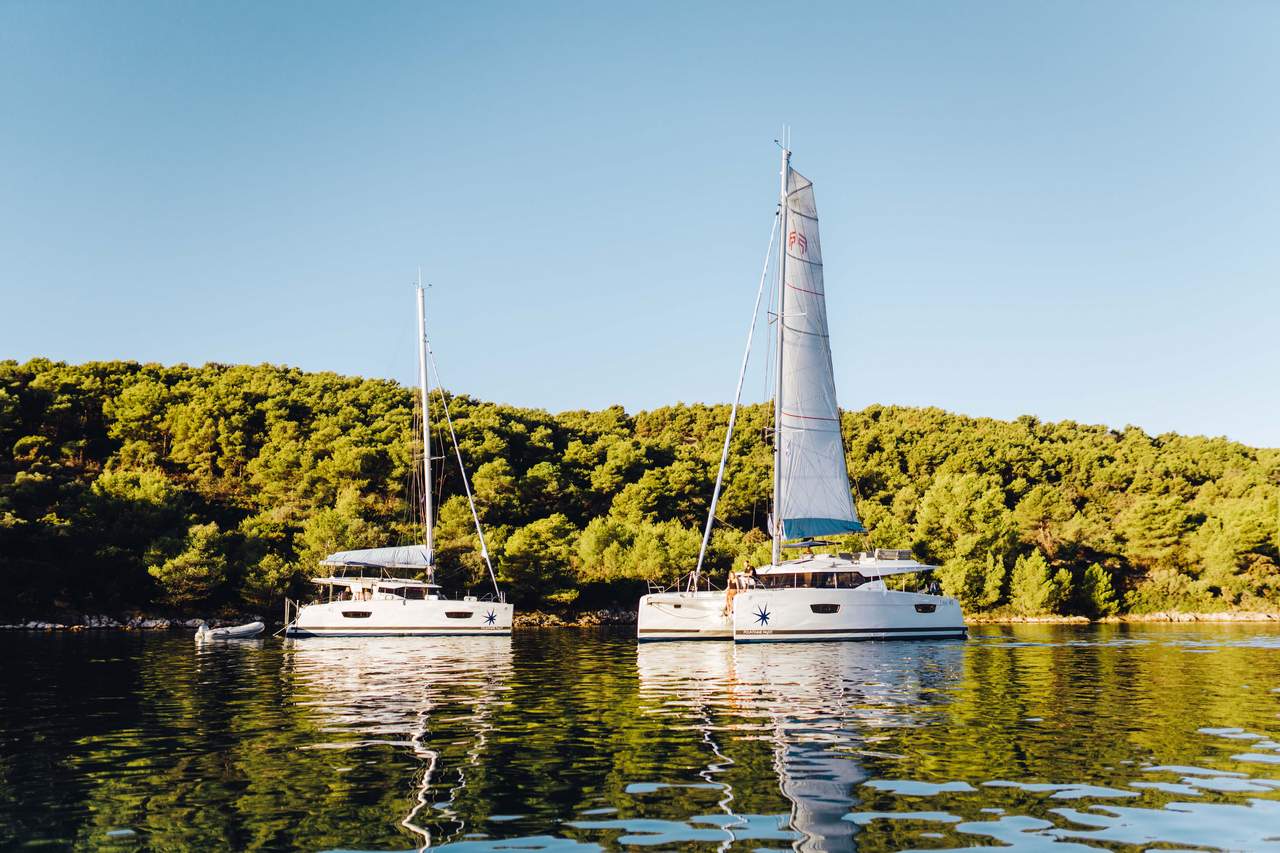
Yacht Ownership Made Easy:
With the Ultimate program, you purchase a new yacht through Navigare Yachting, which is then placed in our charter fleet. In our ownership programs, Navigare takes care of all the logistics associated with maintenance and charter turnover, relieving you of the hassle and saving you both money and time.
Enjoy the privileges of yacht ownership without stress. Leave all the work associated with boat ownership for us. You’ll enjoy your boat on your own schedule and let it generate income the rest of the time without having to lift a finger.
Maximize Income Potential:
The Ultimate Program is not our most popular program without reason. One of its most significant advantages is the opportunity to maximize your income. With the Ultimate program, also known as the variable program, you can capitalize on any unused owner weeks by leaving the boat available for charter to increase your earnings. The percentage of income varies depending on factors such as the type of boat you buy, destination choice, and yacht maintenance.
While the Ultimate program has the potential to be the most profitable, if you prefer a higher level of security, you may opt for the Complete or Smart programs instead, which offer a guaranteed income and no maintenance costs or the ability to offset the initial cost of the yacht using charter revenue.
Flexibility to Explore the World:
Imagine indulging in the pleasures of sailing the world as little or as often as you desire. In this investment program, you can use your yacht for up to 12 weeks per year. This opportunity gives you the choice between maximizing your revenue by leaving the yacht available for charter or getting the most out of your investment by sailing more.
All of our ownership programs not only give you access to your own boat but to our entire fleet and all of our 11 destinations. With a steep discount, you can charter any other yacht in the fleet, giving you the exclusive opportunity to explore other parts of the world and other yacht models while your own boat generates income.
The Ultimate program offers a flexible sailing schedule, where you have the ability to reserve the boat last minute if it has not been booked by charter guests. Additionally, you can share your yacht with your loved ones as owner weeks can be used by your direct family members, without extra charge to them.
Expert Guidance and Support:
At Navigare Yachting, our team of experts takes care of yacht maintenance and charter turnovers, ensuring that you can enjoy your yacht stress-free.
We provide professional yacht and charter management services, with a dedicated owner support system. Our owner’s concierge will take care of you from the day you enter the fleet to the day you leave it, helping you book your owner’s weeks and taking care of any inquiries you might have.
Furthermore, our unique online Service Platform allows you to track all planned and completed services in real-time, keeping a close eye on your vessel at all times.
Holiday Program Rewards:
In our charter fleet, in addition to the sailing time mentioned above, you gain access to our exclusive Holiday Program called Thirdhome . This program allows you to earn points that can be exchanged for unforgettable vacations on land anywhere in the world. Whether you prefer sailing on your own yacht (or another yacht in our fleet) or exploring various worldwide destinations and live in luxury vacation homes, the Ultimate program offers it all.
Thirdhome will take your vacations to the next level, exchanging your week on the water for a luxury ski resort in the Alps, a massive villa in Bali, or a beautiful beach house in Costa Rica while only paying a small cleaning and booking fee. The Holiday program offers thousands of luxury vacation rentals globally and is a truly unique opportunity to get even more out of your yacht ownership.
Carefully Planned Exit Strategy:
When considering a yacht ownership program, it's essential to have a clear exit strategy in mind. Navigare Yachting understands this and offers guidance tailored to your long-term goals and will assist you in making the best decision.
Through our ownership programs, we offer many beneficial exit strategies, whether you want to continue owning boats, take a break from the boating lifestyle, or retire and go cruising.
Thanks to the high market value of our yachts at the end of the charter program, one reasonable option is to simply sell the boat. Trading the vessel in for a new boat is another great option that tailors to those who want to continue living the boating lifestyle within a financially sound framework. Or why not retire on your yacht and sail away into the horizon? Enjoy complete freedom and explore the world.
No matter what you choose, our sales representatives are here to guide you through every step of your exit from the fleet.
All of Navigare Yachting's yacht charter ownership programs provide an exceptional opportunity to own a yacht, maximize your investment, and enjoy unforgettable sailing adventures all at the same time. The Ultimate program has been our most popular historically due to its flexibility, income potential, expert guidance, and access to exclusive benefits. The Ultimate program clearly stands out as an excellent choice for those seeking a financially rewarding yacht ownership program.
Our team of experts is ready to help you embark on a journey of luxury, freedom, and financial rewards, so what are you waiting for? Don’t hesitate to get in touch and start your yacht ownership adventure with Navigare Yachting today!
- Yacht Investment
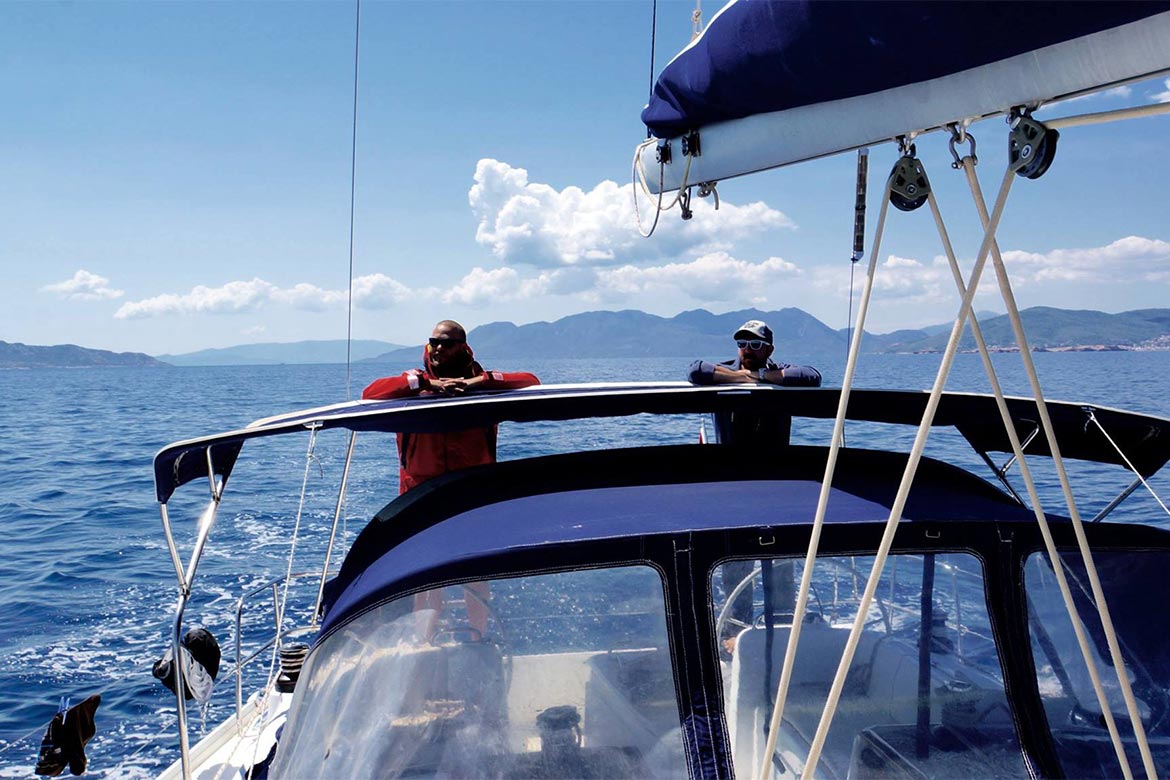
The Story of a Boat Named Joyce
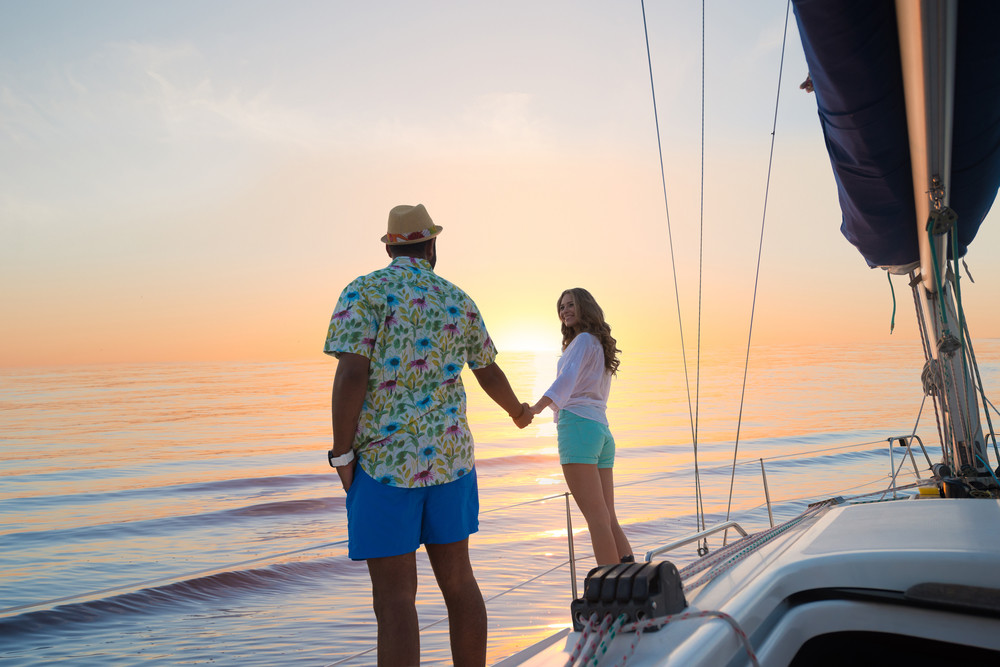
Tax strategies for yacht buyers
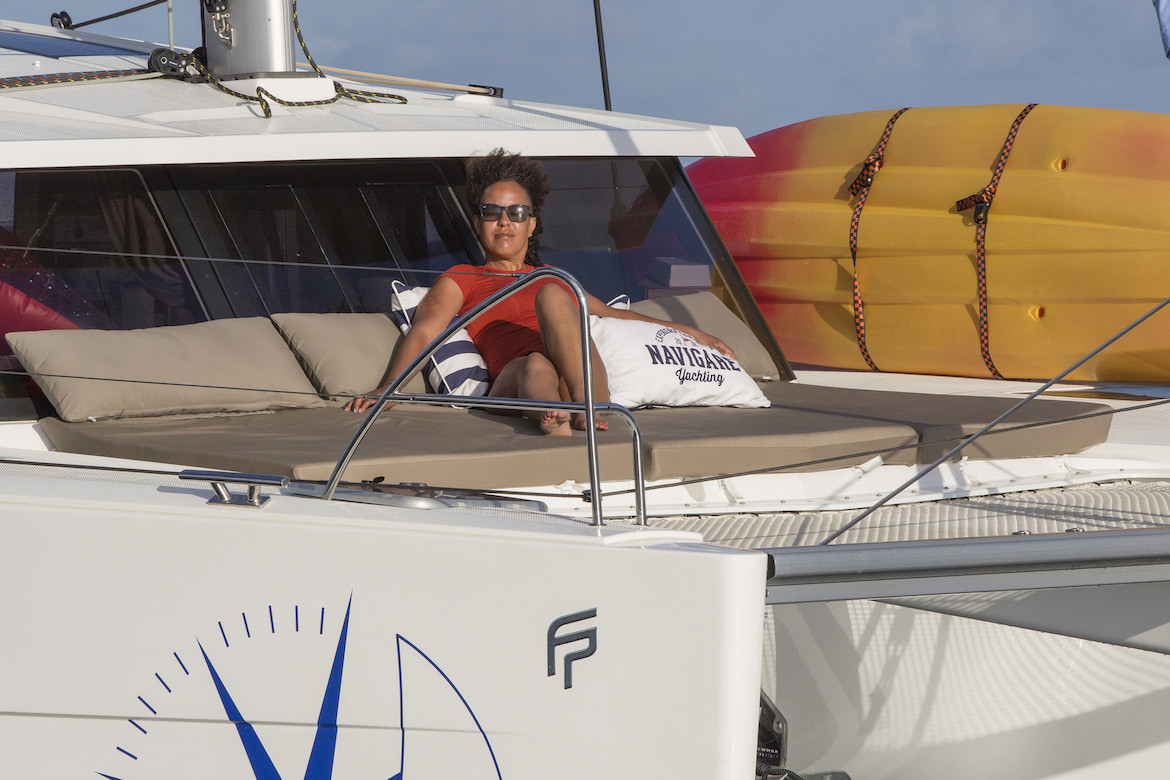
Why Place a Boat in Charter With Navigare Yachting

Navigare Webinar: Financing Your New Yacht

Navigare Webinar: Yacht Ownership in Charter Explained
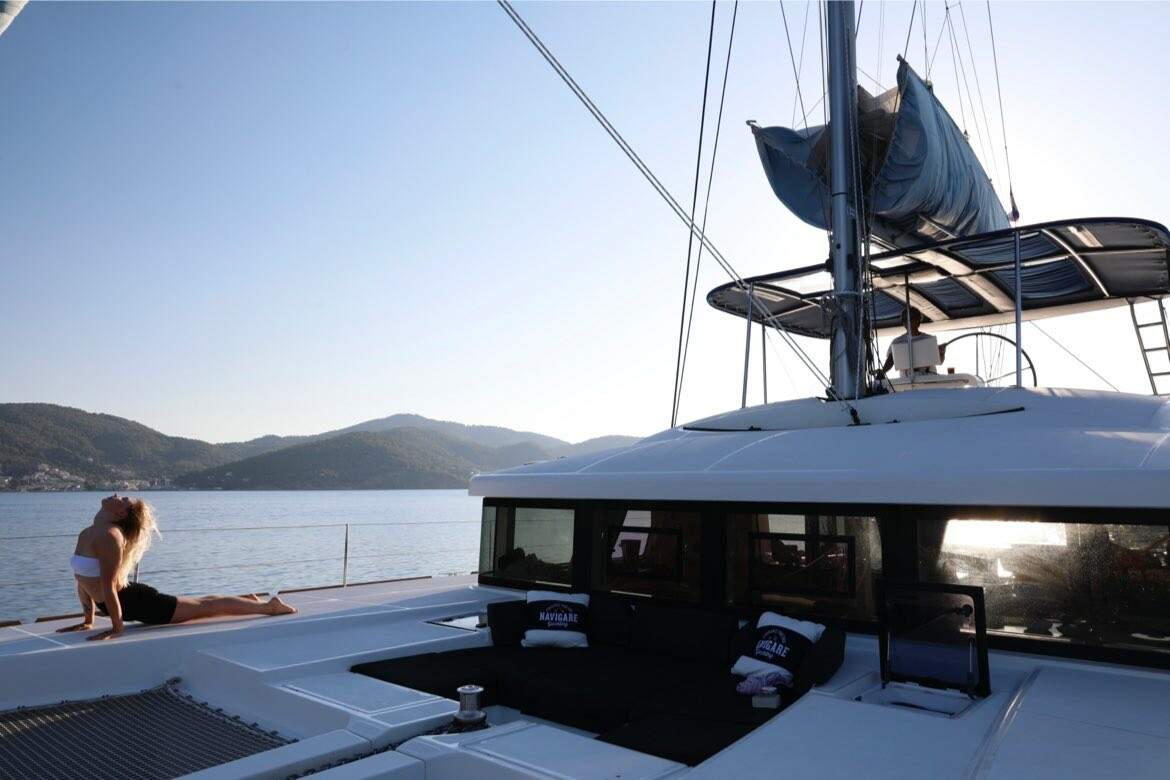
Tax Planning for Yacht Buyers
Blog categories.
- British Virgin Islands
- Yacht Charter Services
- Sailing Tips
- Announcements
Do you have any questions? Ask away! We are here for you.
Navigare yachting & cookies.
Navigare uses both our own cookies and cookies from third parties to be able to improve your experience on the website. We also use the information to evaluate the use of various functions on the site and to support the marketing of our services. We use cookies for the following: necessary features of the website, features that give you the best possible user experience on the site, statistics, web analytics and marketing.
By clicking "Accept All" you give consent to all areas of use. You can also choose which areas of use you want to give your consent to by clicking on “Manage Cookies” below. You can withdraw your consent at any time. Please click on "Privacy Policy" located in the footer of our site for more information on consent management.
About cookies

The global authority in superyachting
- NEWSLETTERS
- Yachts Home
- The Superyacht Directory
- Yacht Reports
- Brokerage News
- The largest yachts in the world
- The Register
- Yacht Advice
- Yacht Design
- 12m to 24m yachts
- Monaco Yacht Show
- Builder Directory
- Designer Directory
- Interior Design Directory
- Naval Architect Directory
- Yachts for sale home
- Motor yachts
- Sailing yachts
- Explorer yachts
- Classic yachts
- Sale Broker Directory
- Charter Home
- Yachts for Charter
- Charter Destinations
- Charter Broker Directory
- Destinations Home
- Mediterranean
- South Pacific
- Rest of the World
- Boat Life Home
- Owners' Experiences
- Interiors Suppliers
- Owners' Club
- Captains' Club
- BOAT Showcase
- Boat Presents
- Events Home
- World Superyacht Awards
- Superyacht Design Festival
- Design and Innovation Awards
- Young Designer of the Year Award
- Artistry and Craft Awards
- Explorer Yachts Summit
- Ocean Talks
- The Ocean Awards
- BOAT Connect
- Between the bays
- Golf Invitational
- Boat Pro Home
- Pricing Plan
- Superyacht Insight
- Product Features
- Premium Content
- Testimonials
- Global Order Book
- Tenders & Equipment
The superyachts owned by tech moguls
Amazon founder Jeff Bezos is set to join the exclusive club of yacht-owning tech tycoons as the rumoured owner of Oceanco's mighty 127m sailing yacht . Though it should come as no surprise - other big names in tech such as the late Steve Jobs, Larry Ellison and Paul Allen have been responsible for some of the biggest and most ground-breaking superyachts in the world...
The 127-metre Oceanco sailing yacht Koru, formerly Y721, was launched and reportedly delivered to Amazon founder Jeff Bezos in April 2023. This three-masted schooner, meaning “new beginnings” in Maori, with an expected 33000 GT and a steel hull and aluminium superstructure, is the largest in the world and the longest built in the Netherlands at Oceanco. Knocking Lürssen's Eos , owned by Biller and Diane von Furstenburg, off the top spot, Koru harnesses design similarities with her black hull, white superstructure and classic lines. However, the intricate gold paintwork, scarlet bootstrap and elaborate figurehead on the bow particularly set her apart.
Larry Ellison
American business magnate Larry Ellison is the co-founder of the billion-dollar computer tech corporation Oracle. In 2004, he commissioned the 138-metre Lürssen superyacht Rising Sun (pictured), which stands today as the 15th largest yacht in the world. It was also the last yacht that ever came from the drawing boards of legendary designed Jon Bannenberg, sporting a military-esque profile with a lean destroyer-type hull and extensive use of structural glass . Rising Sun boasts 8,000m² of living space including a wine cellar and basketball court, with a crew of 45. One of her tenders, a catamaran, even carries the yacht’s 4x4 vehicle ashore.
Ellison later sold the yacht to media mogul David Geffen and has since hosted a parade of Hollywood's glitterati on board including Leonardo DiCaprio, Steven Spielberg, Bruce Springsteen and Oprah Winfrey – to name a few.
In 2011, Ellison appeared to downsize and took delivery of the 88-metre Feadship Musashi . Not unlike Rising Sun in its appearance, structural glass features heavily throughout with a central glass lift, surrounded by a stainless steel and glass staircase that passes through every deck.
More about this yacht
The late Microsoft co-founder Paul Allen is responsible for two of the most iconic superyachts in the world. At 126-metres in length, Octopus is perhaps his most famous. Built by Lürssen in 2003, this ice-classed superyacht was designed for extended cruising to the most remote locations on earth with a range of 12,500 nautical miles. Home to a helicopter garage, drive-in tender garage, six tenders, and a submarine, she packs a serious punch within her 9,932GT – not to mention the cinema, swimming pool, recording studio, basketball court and spa. At the end of 2019, she joined the market for the very first time , having completed an eight-month refit at Blohm+Voss, and remains the benchmark for exploration yachting.
Tatoosh is another honourable mention and was built by German shipyard Nobiskrug in 2000, three years prior to the delivery of Octopus . At 92-metres, she's smaller than her successor, but to describe Tatoosh as "small" would be a severe understatement. Highlights include a six-foot-deep swimming pool, a pair of helipads, a crew of 30, and a custom 12-metre Hinckley powerboat that she carries on her top deck. Tatoosh is also listed for sale following a refit earlier this year.
Yachts for charter
The 78-metre Feadship Venus was built for the late Apple boss and founder Steve Jobs. Built under the codename Project Aqua, Venus was launched to international fanfare in 2012, heralded for its extensive use of glass and pared-back design courtesy of Philippe Starck . Innovative features include a false top deck that conceals the communication and television receivers from view and a passarelle that, when opened, looks like the charging port of an iPhone. Venus ’s interior details have been closely guarded since its launch. Sadly, Jobs died a year before the yacht was delivered.
Charles Simonyi
Charles Simonyi led the team that built the first edition of the Microsoft Office software suite and was rumoured to have previously owned Lürssen’s iconic 71-metre SKAT . Nearly two decades after her launch in 2002, she joined the market for the first time and now Simonyi is thought to have upgraded to the 89-metre Lürssen Norn . Both yachts, penned by Espen Onion, share similar design features. Standout features include an alfresco cinema and adapted depth pool floor with dance floor. Norn was delivered in May 2023.
Sergey Brin
Google co-founder Sergey Brin reportedly owns the high-speed SilverYachts superyacht named Dragonfly , after Google’s once-secret project to launch a censored search engine in China. Delivered in 2009, the 73.3-metre Dragonfly was hailed as the fastest, most fuel-efficient long-range cruising superyacht on the water with a transatlantic range at 22 knots and a fuel consumption of only 360 litres per hour at 18 knots, extending her range to 4,500 nautical miles. Dragonfly is said to have a dance floor and open-air movie theatre on board. The vessel was applauded for its contribution to the disaster relief effort in Vanuatu after Hurricane Pam devastated the island in 2015. The crew reportedly moved 62 metric tons of freshwater ashore, treated over 250 patients, facilitated three medical evacuations, and built shelters in multiple villages and cleared numerous helicopter landing zones for ongoing support.
Google’s billionaire co-founder Larry Page purchased the 60-metre explorer yacht conversion Senses from a New Zealand businessman Sir Douglas Myers back in 2011. The globe-trotting superyacht features interiors by Philippe Starck and can accommodate a total of 12 guests on board, with primary guests reaping the benefits of the master suite's gyro-stabilised bed. Senses also houses an exceptional toy box with three high-speed tenders, six wave runners, a jet board and a JetLev. According to the New Zealand Herald, Senses is currently undergoing a refit in Whangārei, New Zealand, after being sold to an unknown buyer in 2020.
Barry Diller
The world’s largest three-masted schooner – also the third largest sailing yacht in the world – is owned by fashion designer Diane von Fürstenberg and her husband Barry Diller, chairman and senior executive of IAC/InterActiveCorp and Expedia Group. The 92.92-metre sailing yacht, named Eos , was built in Germany by Lürssen and delivered in 2006 with a trio of masts that stand 61-metres tall. The sailing yacht has hosted the couple's star-studded group of friends including Andy Cohen, Gayle King, Bradley Cooper, Harry Styles and Karlie Kloss. The interiors were designed by Francois Catroux, who Vanity Fair named as “the super-rich's favourite interior designer" in 2016.
Mark Zuckerburg
The 107-metre Kleven superyacht Andromeda was built for serial superyacht owner Graeme Hart and delivered under the name Ulysses . In 2017, a year after its launch, rumours began circulating that Facebook founder Mark Zuckerburg had purchased the rugged, six-deck explorer (although a Facebook spokesperson was quick to stamp out the rumours and released a statement denying the claims). Andromeda can carry 36 guests and is equipped with an impressive inventory of toys and tenders, including six motorbikes, two ATVs, a helicopter and an amphibious rib. Five years after her launch, Andromeda still ranks among the largest explorer yachts in the world .
Eric Schmidt
The former Google ceo Eric Schmidt backed out of the purchase of the abandoned 81.3-metre Oceanco Alfa Nero but has been said to have moved onto become the new owner of a 95-metre Lürssen. Kismet was sold in September 2023 to the billionaire as part of one of the biggest brokerage deal of the year. With the details shrouded in secrecy the yacht is now aptly known as Whisper . Espen Onio was responsible for her iconic exterior while inside was thanks to Reymond Langton , achieving the original brief from the previous commissioning owner Shahid Khan of “caviar and champagne.” Standout details include the hi-tech, art deco saloon, a private observation platform and the Persian-inspired spa area.
The co-founder and former ceo of WhatsApp, Jan Koum, has been rumoured to own the 99.9-metre Feadship , Moonrise. The yacht’s clean and strong lines, penned by Chris Bottoms from Studio de Voogt , won the highly competitive class of best displacement motor yachts above 3,000 GT in the World Superyacht Awards 2021. Features include the helicopter landing deck and modern interiors by Remi Tessier . Accommodation is for up to 16 guests, and there are 32 crew members onboard Moonrise to attend to the guests' every need. The Ukrainian-American mogul is also said to own the accompanying support vessel Nebula.
Evan Speigel
The Silicone Valley ceo, Snapchat founder Evan Spiegel has been reportedly said to own the 94.8-metre Feadship Bliss. Delivered in 2021 the motor yacht penned by Feadship's Studio De Voogt Naval Architects has most recently been spotted cruising Auckland in September 2023. Spiegel is rumoured to be Feadship's younger client. Bliss can accommodate up to 18 guests across nine staterooms; however little else is known about the 2983 GT yacht.
Sponsored listings
- Bottom Painting & Prop Speed
- Fiberglass & Paint Work
- Running Gear & Valves
- Full-Service Team
- Monthly Maintenance Programs
- Dockside Service Team
- Full-Service Boatyard
- Management Services
- Accounting & Reporting
- Relevant Management Experience
- News and Media
World’s Richest Yacht Owners
The world’s richest yacht owners.
It’s no surprise that owning a yacht is popular among the billionaire class. It’s not uncommon for billionaires around the world to not only own one luxury superyacht, but multiple yachts. Not to mention tenders and other high-tech watercrafts. Some of the richest people in the world own some of the largest, most expensive mega yachts. We take a look at some of the world’s richest yacht owners and the luxury vessels they have bought.
Bernard Arnault
Worth a whopping $156.8 billion in 2021, Bernard Arnault is a French businessman and art collector most known as the chairman and chief executive of LVMH Moët Hennessy Louis Vuitton. He is currently the third richest person in the world. 1 LVMH is a French multinational conglomerate and the world’s largest luxury-goods company. Renowned brands such as Dior, Givenchy, Bulgari, and Tiffany & co. are owned by this corporation.
Bernard Arnault Yacht
Bernard Arnault owns the 101.5-meter motor yacht Symphony . Built in the Netherlands by Feadship, this luxury super yacht has four main engines and can carry 20 passengers and 38 crew. A 6-meter glass-bottom swimming pool and outdoor cinema are some of the vessel’s standout features.
Larry Ellison
Worth $90.6 billion in 2021, Larry Ellison is an American business magnate and investor. One of the most famous yacht owners, he is best known for being the co-founder and executive chairman of Oracle Corporation. Oracle Corporation is an American multinational computer technology corporation known as the world’s largest database management company.
Larry Ellison Yacht
Larry Ellison owns the 87.78-meter motor yacht Musashi . Built in the Netherlands by Feadship in 2011, this five-deck super yacht can accommodate 18 guests and 24 crew. Its exterior was inspired by Japanese design and Art Deco style. An outdoor gym and spa are only a few of the vessel’s luxury amenities.
The eighth richest man in the world as of 2021, Larry Page is worth $90.3 billion. He is an American computer scientist and internet entrepreneur best known as one of two co-founders of Google. Google is an American multinational technology company specializing in internet-related services and products which includes the world’s most used search engine, online advertising platforms, and cloud computing.
Larry Page Yacht
Larry Page owns the 58.8-meter motor yacht SENSES . Built and launched by German yacht builder Fr. Schweers Shipyard in 1999, it went under its latest yacht refit in 2015. This luxury yacht sleeps up to 12 guests with accommodations for 14 crew. An expedition yacht, SENSES features a large helipad, ice-strengthened hull, and three high-speed tenders.
Yacht Management South Florida, Inc. specializes in complete yacht care . As such, we offer premier maintenance services at our South Florida marina including boat bottom cleaning , and hull painting. Our certified yacht technicians can also go to your yacht to provide dockside assistance and emergency yacht repair services .
Contact us today to schedule any technical work or learn more about out our extensive yacht maintenance services and first-class yacht management program!
Additional Reading
- Top 5 Largest Yachts in The World
- List of Famous Yachts in Movies
- Dorothy Neufeld, Visual Capitalist – The Richest People in the World in 2021

For all inquiries, fill out the form below and a member of our team will respond as soon as possible
On the Menu: Bru Burger, Che Bello now open in Bloomington; Bruster's opens March 1

Bru Burger Bar opened its Bloomington restaurant Monday in Suite 1 at 229 S. Grant St., on the first floor of the western portion of The Annex apartment complex. It's the 15th Bru Burger opened by the Cunningham Restaurant Group, which has Bru Burgers in South Bend, Lafayette, Evansville and Indianapolis, where the first one opened in 2011 on Massachusetts Avenue.
General manager Ethan Beach is excited about the Bloomington location, which can seat about 130 people inside with more seating on the patio along Grant Street. The restaurant will be open 11 a.m.-9 p.m. Sunday through Thursday and 11 a.m.-10 p.m. Friday and Saturday.
The burgers are made with a custom grind of sirloin, chuck and brisket and are served with choice of fries, onion rings, slaw or fresh fruit. Burgers include the Bru Burger, with Taleggio cheese, bacon, tomato jam, caramelized onion, chopped lettuce and mayo; the Mexicali BBQ with white queso, pickled jalapeno, guacamole, fried onion, house chipotle barbecue sauce, lettuce and tomato; and the Melt Your Face, with habanero hot sauce, habanero jack, jalapeno, habanero whole grain mustard, lettuce and tomato; and a lamb burger with whipped goat cheese, spinach, marinated red onion jam, curry mayo, lettuce and tomato.
Other sandwiches include a Bru hot chicken that has fried chicken, Nashville hot dry rub, mayo and lettuce; a portobello melt with spinach, caramelized onion, horseradish Havarti and Parmesan cheese on sourdough; and a Baja salmon with spinach, guacamole, black bean aioli, and black bean edamame salsa served on an oat bun.
A selection of wines, beer and cocktails are offered. Draught beer includes some brews from Upland Brewing Co., Bloomington Brewing Co., 3 Floyds Brewing and Blockhead Beerworks. Signature cocktails include a Bru Bloody Mary, a Bru margarita and a Texas Mule.
Carissa Newton, vice president of marketing with Cunningham Restaurant Group, said her favorites are the patty melt and the siracha Caesar salad with salmon. The Bloomington location has online ordering, but doesn't have a delivery service, though plans are to add one soon.
A Coffee Beanery and Cold Stone Creamery are expected to open soon in the eastern part of the apartment complex .
Che Bello reopened Feb. 23 with new chefs, ownership
After several setbacks , Che Bello Italian restaurant celebrated its grand reopening on Feb. 23. Reservations are available on OpenTable for the restaurant at 106 W. Sixth St. Even though the restaurant's name has not changed, the owners, chefs, food and cocktails are all different. Executive chef Steve Martinez last worked at 21 North Eatery + Cellar in Martinsville.
Che Bello will offer brunch from 8 to 11 a.m. Friday, Saturday and Sunday and will be open 10 a.m.-4 p.m. daily for lunch and 4-10 p.m. for dinner. While lunch and dinner menus will differ, pizza is available throughout the day as are espresso drinks and fruit juices.
Some restaurants close: Loss of 5 businesses shows why supporting local is essential
Bruster's Real Ice Cream opens March 1 for its 2024 season
Bruster's Real Ice Cream , at 4531 E. Third St., will reopen on March 1 and be open noon to 9 p.m. daily through March 31 and then 11 a.m.-10 p.m. April through September.
March will be mint month at Bruster's where mint chocolate chip, mint Oreo and mint fudge crunch will be featured. Bruster's first new flavor of the season is rainbow sprinkle cookie. March 9 will be PJ Day, when anyone who wears their pajamas or donates new pajamas to help youth in foster care will get a free small waffle cone with a scoop of ice cream.
Like past years, every Thursday will be BYOBanana day with customers who bring a banana receiving half off a banana split. Bruster's will be open on Easter, which is March 31, and will be taking preorders for ice cream bunny cakes that each serve six to eight people.
Leap Day celebrated with specials at FARM
In case you haven't looked closely at the calendar, February has an extra day — Feb. 29 — since it's leap year. To celebrate, FARMbloomington will offer special cocktails as well as a dish of garlic crispy frog legs with parsley butter and ratatouille from 5 p.m. to close Feb. 28, 29 and March 1. Chef Daniel Orr says the French frog leg entrée, the signature dish at La Grenouille in New York City when he was there, received 3 stars from The New York Times.
Pizza by the slice available at both Aver's locations
Both Aver's Pizza locations, North at 1837 N. Kinser Pike and South at 317 E. Winslow Road, are offering grab and go lunch slices for carry out only. The slices are available 11 a.m.-1 p.m. Monday through Friday. Every day the selection will include cheese, pepperoni, sausage (sometimes Crumbles, other days Italian with sweet peppers added), and a rotating Slice of the Day. The Slice of the Day selection will be posted daily on Aver's social media pages (@averspizza). A list for the month is on Aver's website, averspizza.com/lunch-slices/ .
Each slice is one-eighth of a 14-inch soft-crust pan-style pizza. Cheese slices are $3, pepperoni and sausage are $3.25 and slice of the day is $4.
Contact Carol Kugler at [email protected] or 812-331-4359.
- Share full article
Advertisement
Supported by
Nature Has Value. Could We Literally Invest in It?
“Natural asset companies” would put a market price on improving ecosystems, rather than on destroying them.

By Lydia DePillis
Picture this: You own a few hundred acres near a growing town that your family has been farming for generations. Turning a profit has gotten harder, and none of your children want to take it over. You don’t want to sell the land; you love the open space, the flora and fauna it hosts. But offers from developers who would turn it into subdivisions or strip malls seem increasingly tempting.
One day, a land broker mentions an idea. How about granting a long-term lease to a company that values your property for the same reasons you do: long walks through tall grass, the calls of migrating birds, the way it keeps the air and water clean.
It sounds like a scam. Or charity. In fact, it’s an approach backed by hardheaded investors who think nature has an intrinsic value that can provide them with a return down the road — and in the meantime, they would be happy to hold shares of the new company on their balance sheets.
Such a company doesn’t yet exist. But the idea has gained traction among environmentalists, money managers and philanthropists who believe that nature won’t be adequately protected unless it is assigned a value in the market — whether or not that asset generates dividends through a monetizable use.
The concept almost hit the big time when the Securities and Exchange Commission was considering a proposal from the New York Stock Exchange to list these “natural asset companies” for public trading. But after a wave of fierce opposition from right-wing groups and Republican politicians, and even conservationists wary of Wall Street, in mid-January the exchange pulled the plug.
That doesn’t mean natural asset companies are going away; their proponents are working on prototypes in the private markets to build out the model. And even if this concept doesn’t take off, it’s part of a larger movement motivated by the belief that if natural riches are to be preserved, they must have a price.
Beyond Philanthropy
For decades, economists and scientists have worked to quantify the contributions of nature — a kind of production known as ecosystem services.
By traditional accounting methods, a forest has monetary value only when it has been cut into two-by-fours. If a forest not destined for the sawmill burns down, economic activity actually increases, because of the relief efforts required in the aftermath.
When you pull back the camera, though, forests help us in many more ways. Beyond sucking carbon out of the air, they hold the soil in place during heavy rains, and in dry times help it retain moisture by shading the ground and protecting winter snowpack , which helps keep reservoirs full for humans. Without the tree-covered Catskills , for example, New York City would have to invest much more in infrastructure to filter its water.
Natural capital accounting, which U.S. statistical agencies are developing as a sidebar to their measurements of gross domestic product, puts numbers on those services. To move those calculations beyond an academic exercise, they need to be factored into incentives.
The most common way to do that is the social cost of carbon : a price per ton of emissions that represents climate change’s burdens on humanity, such as natural disasters, disease and reduced labor productivity. That number is used to evaluate the costs and benefits of regulations. In some countries — notably not the United States, at least on the federal level — it is used to set taxes on emissions. Efforts to remove carbon can then generate credits, which trade on open markets and fluctuate with supply and demand.
But carbon is just the simplest way of putting a price on nature. For the other benefits — wildlife, ecotourism, protection from hurricanes and so on — the revenue model is less obvious.
That’s what Douglas Eger set out to address. He wanted to work for an environmental group after college, but on his conservative father’s advice he instead made a career in business, running companies in pharmaceuticals, tech and finance. With some of his newly built wealth, he bought a 7,000-acre tract northwest of New York City to preserve as open space.
He didn’t think philanthropy would be enough to stem the loss of nature — a seminal 2020 report found that more than $700 billion was needed annually to avert a collapse in biodiversity. Government wasn’t solving the problem. Socially responsible investing, while making progress, wasn’t reversing damage to critical habitats.
So in 2017, Mr. Eger founded the Intrinsic Exchange Group with the goal of incubating natural asset companies, NACs for short. Here’s how it works : A landowner, whether a farmer or a government entity, works with investors to create a NAC that licenses the rights to the ecosystem services the land produces. If the company is listed on an exchange, the proceeds from the public offering of shares would provide the landowner with a revenue stream and pay for enhancing natural benefits, like havens for threatened species or a revitalized farming operation that heals the land rather than leaching it dry.
If all goes according to plan, investments in the company will appreciate as environmental quality improves or demand for natural assets increases, yielding a return years down the road — not unlike art, or gold or even cryptocurrency.
“All of these things, if you think about it, are social agreements to a degree,” Mr. Eger said. “And the beauty of a financial system is between a willing buyer and seller, the underlying becomes true.”
In discussions with like-minded investors, he found an encouraging openness to the idea. The Rockefeller Foundation kicked in about $1.7 million to fund the effort, including a 45-page document on how to devise an “ecological performance report” for the land enrolled in a NAC. In 2021, Intrinsic announced its plan to list such companies on the New York Stock Exchange , along with a pilot project involving land in Costa Rica as well as support from the Inter-American Development Bank and major environmental groups . By the time they filed an application with the S.E.C. in late September, Mr. Eger was feeling confident.
That’s when the firestorm began.
The American Stewards of Liberty, a Texas-based group that campaigns against conservation measures and seeks to roll back federal protections for endangered species, picked up on the plan. Through both grass-roots organizing and high-level lobbying, it argued that natural asset companies were a Trojan horse for foreign governments and “global elites” to lock up large swaths of rural America, particularly public lands. The rule-making docket started to fill up with comments from critics charging that the concept was nothing but a Wall Street land grab.
A collection of 25 Republican attorneys general called it illegal and part of a “radical climate agenda.” On Jan. 11, in what may have been the final straw, the Republican chairman of the House Natural Resources Committee sent a letter demanding a slew of documents relating to the proposal. Less than a week later, the proposal was scratched.
Unexpected Headwinds
Mr. Eger was dismayed. The most powerful forces arrayed against natural asset companies were people who wanted land to remain available for uses like coal mining and oil drilling, a fundamental disagreement about what’s good for the world. But opponents also made spurious arguments about the risks of his plan, Mr. Eger said. Landowners would decide whether and how to set up a NAC, and existing laws still applied. What’s more, foreign governments can and do buy up large tracts of land directly; a license to the land’s ecological performance rights would create no new dangers.
There is also pushback, however, from people who strongly believe in protecting natural resources, and worry that monetizing the benefits would further enrich the wealthy without reliably delivering the promised environmental upside.
“If investors want to pay a landowner to improve their soil or protect a wetland, that’s great,” said Ben Cushing, the director of the Sierra Club’s Fossil-Free Finance campaign. “I think we’ve seen that when that is turned into a financial asset that has a whole secondary market attached to it, it creates a lot of distortions.”
Another environmental group, Save the World’s Rivers, filed a comment opposing the plan partly because, it said, the valuation framework centered on nature’s use to humans, rather than other living things.
To Debbie Dekleva, who lives in Ogallala, Neb., the prospect that a natural asset company could enroll large tracts of land seems like a very real threat. For 36 years, her family has worked to commercialize milkweed, a wild plant that produces a strong fiber and is the only thing that the caterpillars of imperiled monarch butterflies will eat. Ms. Dekleva pays local residents to collect the pods from milkweed stands with permission from friendly landowners, and then processes them into insulation, cloth and other products.
That sounds like a type of business that might contribute to a NAC’s value. But Ms. Dekleva suspects that she wouldn’t be part of it — faraway investors and big companies might lock up the rights to milkweed on surrounding land, making it harder for her to operate.
“I think that whoever writes the rules wins,” Ms. Dekleva said. “So let’s say Bayer is doing regenerative agriculture, and they’re going to say, ‘And now we get these biodiversity credits, and we get this, and we get this, and we get this.’ How does someone like me compete with something like that?”
Such opposition — the kind that stems from deep skepticism about financial products that are marketed as solving problems through capitalism, and questions about who is entitled to nature’s gifts — may be hard to dislodge.
Mr. Eger said he built safeguards into the proposed rule to guard against concerns like Ms. Dekleva’s. For example, each company’s charter is supposed to include an “equitable benefit sharing policy” that provides for the well-being of local residents and businesses.
For now, Intrinsic will seek to prove the concept in the private markets. The company declined to disclose the parties involved before the deals are closed, but identified a few projects that are close. One is attached to 1.6 million acres owned by a North American tribal entity. Another plans to enroll soybean farms and shift them to more sustainable practices, with investment from a consumer packaged goods company that will buy the crop. (The pilot project in Costa Rica, which Intrinsic envisioned as covering a national park in need of funding to prevent incursions from arsonists and poachers, stalled when a new political party came to power.)
And the concept remains attractive to some landowners who’ve managed to wrap their heads around it. Take Keith Nantz, a cattle rancher who has been trying to build a vertically integrated, sustainable beef operation across the Pacific Northwest. He and a few partners would like to move to less chemically intensive grazing practices, but banks are hesitant to lend on a project that could reduce yields or jeopardize crop insurance coverage.
A natural asset company could be a piece of his financing puzzle. And to Mr. Nantz, the opposition comes mostly from a place of fear.
“There’s nothing being forced by a government or state or organization to be a part of this or not,” he said. “We can choose to be a part of this, and hopefully it’s a great opportunity to bring some capital.”
Catrin Einhorn contributed reporting.
Lydia DePillis reports on the American economy. She has been a journalist since 2009, and can be reached at [email protected]. More about Lydia DePillis

Strange Glow Over Moscow Skies Triggers Panic as Explosions Reported
B right flashes lit up the night sky in southern Moscow in the early hours of Thursday morning, new footage appears to show, following reports of an explosion at an electrical substation on the outskirts of the city.
Video snippets circulating on Russian-language Telegram channels show a series of flashes on the horizon of a cloudy night sky, momentarily turning the sky a number of different colors. In a clip shared by Russian outlet MSK1.ru, smoke can be seen rising from a building during the flashes lighting up the scene.
Newsweek was unable to independently verify the details of the video clips, including when and where it was filmed. The Russian Ministry of Emergency situations has been contacted via email.
Several Russian Telegram accounts said early on Thursday that residents of southern Moscow reported an explosion and a fire breaking out at an electrical substation in the Leninsky district, southeast of central Moscow.
Local authorities in the Leninsky district told Russian outlet RBC that the explosion had happened in the village of Molokovo. "All vital facilities are operating as normal," Leninsky district officials told the outlet.
The incident at the substation in Molokovo took place just before 2 a.m. local time, MSK1.ru reported.
Messages published by the ASTRA Telegram account, run by independent Russian journalists, appear to show residents close to the substation panicking as they question the bright flashes in the sky. One local resident describes seeing the bright light before losing access to electricity, with another calling the incident a "nightmare."
More than 10 villages and towns in the southeast of Moscow lost access to electricity, the ASTRA Telegram account also reported. The town of Lytkarino to the southeast of Moscow, lost electricity, wrote the eastern European-based independent outlet, Meduza.
Outages were reported in the southern Domodedovo area of the city, according to another Russian outlet, as well as power failures in western Moscow. Electricity was then restored to the areas, the Strana.ua outlet reported.
The cause of the reported explosion is not known. A Telegram account aggregating news for the Lytkarino area described the incident as "an ordinary accident at a substation."
The MSK1.ru outlet quoted a local resident who speculated that a drone may have been responsible for the explosion, but no other Russian source reported this as a possible cause.
Ukraine has repeatedly targeted Moscow with long-range aerial drones in recent months, including a dramatic wave of strikes in late May.
On Sunday, Moscow Mayor Sergei Sobyanin said the region's air defense systems had intercepted an aerial drone over the city of Elektrostal, to the east of Moscow. No damage or casualties were reported, he said.
The previous day, Russian air defenses detected and shot down another drone flying over the Bogorodsky district, northeast of central Moscow, Sobyanin said.
There is currently no evidence that an aerial drone was responsible for the reported overnight explosion at the electrical substation in southern Moscow.
Related Articles
- Russian Soldier Bashes Drone With Shovel After Detonation Failure: Video
- Russia Headed for Disappointment in Battles Along Dnieper River: UK
- Ukraine's Military Receives Good News From Multiple NATO Allies
Start your unlimited Newsweek trial


Olga Chenchikova
Age, biography and wiki.
Olga Chenchikova was born on 17 May, 1956 in Elektrostal, Moscow Oblast, RSFSR, USSR [now Russia], is an Actress. Discover Olga Chenchikova's Biography, Age, Height, Physical Stats, Dating/Affairs, Family and career updates. Learn How rich is She in this year and how She spends money? Also learn how She earned most of networth at the age of 65 years old?
We recommend you to check the complete list of Famous People born on 17 May. She is a member of famous Actress with the age 67 years old group.
Olga Chenchikova Height, Weight & Measurements
At 67 years old, Olga Chenchikova height not available right now. We will update Olga Chenchikova's Height, weight, Body Measurements, Eye Color, Hair Color, Shoe & Dress size soon as possible.
Dating & Relationship status
She is currently single. She is not dating anyone. We don't have much information about She's past relationship and any previous engaged. According to our Database, She has no children.
Olga Chenchikova Net Worth
Her net worth has been growing significantly in 2022-2023. So, how much is Olga Chenchikova worth at the age of 67 years old? Olga Chenchikova’s income source is mostly from being a successful Actress. She is from USSR [now Russia]. We have estimated Olga Chenchikova's net worth , money, salary, income, and assets.
Olga Chenchikova Social Network
Olga Chenchikova was born on May 17, 1956 in Elektrostal, Moscow Oblast, RSFSR, USSR.

Celebs Wiki
Olga chenchikova fans also viewed:, verónika con k, sumithra (actress), vilma santos-recto, caitlin o'heaney, susan nussbaum, thoko ntshinga, aldine müller, kuo mei-chiang, tatyana kudryavtseva, madhu kambikar.

IMAGES
COMMENTS
The family of two Americans who may have been killed after prison escapees allegedly hijacked their yacht in Granada are clinging to hope the couple might be found alive. CNN values your feedback 1.
The American couple allegedly hijacked by escaped prisoners while on their yacht in Grenada were likely thrown overboard, Royal Grenada Police Force Commissioner Don McKenzie said during a news ...
An American couple who was feared dead after their catamaran yacht was hijacked by three escaped prisoners were likely thrown overboard in the Caribbean Sea, authorities said Monday.. Ralph Hendry ...
One of the owner's unique approaches to managing his yachting experience is the investment he puts into his crew. Che has two full sets of six-person crew, which he swaps out about every four months. While under way, the owner continues to use Exmar Shipmanagement as shore-side contact so that if the captain on board has a problem and cannot sort it right away, he can contact the office in ...
The yacht "Simplicity", that officials say was hijacked by three escaped prisoners with two people aboard, is docked at the St. Vincent and the Grenadines Coastguard Service Calliaqua Base, in Calliaqua, St. Vincent, Friday, Feb. 23, 2024. Authorities in the eastern Caribbean said they were trying to locate two people believed to be U.S ...
The yacht carries . litres of fuel on board. In the world rankings for largest yachts, the superyacht, Che, is listed at number 3682. She is the largest yacht built by Sunreef Yachts. Che's owner is shown in SYT iQ and is exclusively available to subscribers. On SuperYacht Times, we have 43 photos of the yacht, Che, and she is featured in 21 ...
F ORT PIERCE, Fla. - An American couple who went missing while sailing off the coast of Grenada is feared dead after their catamaran yacht was hijacked by three escaped prisoners, authorities said.
The 34.75m/114' catamaran yacht 'Che' by the Polish shipyard Sunreef Yachts offers flexible accommodation for up to 8 guests in 4 cabins and features interior styling by Polish designer Sunreef Yachts.. For a luxury yacht charter with a difference, Che offers a variety of convivial social and dining options, as well as well laid-out deck areas primed for relaxing and entertaining with family ...
of che The owner of the 35m catamaran Che is a Belgian shipowner and businessman who, with his yacht, sought to achieve a sense of peace and opportunity. His ideas on new builds, design and running a crew offer insights into his harmonised thinking on both business and pleasure. - Words by don Hoyt Gorman, PHotoGraPHy by sunreef / exmar
As younger, more adventurous owners like tech billionaires have joined the superyacht market, the design of yachts and the toys they carry have changed markedly. New types of vessels have been created to meet this desire for off-the-beaten-track cruising, from support yachts to water toys to the massive growth in explorer yachts.
Advertisement. A mystery buyer bought a 414-foot superyacht that was once owned by late Microsoft co-founder Paul Allen for $278 million. Allen had the boat, which was named "Octopus," built in ...
He is the owner of the Amels yacht LADY E. Lady E is a luxury motor yacht built by the Dutch shipyard Amels and designed by Walter Franchini Architetto. The yacht features powerful Caterpillar engines, a maximum speed of 17 knots , and a range of over 3,000 nautical miles.
By Katie Scott 4 September 2023. Dutch shipyard Heesen has successfully delivered the stunning 80m (262ft) superyacht GENESIS to her new owner, setting a new benchmark for the yard as the biggest yacht they have built to date. Surpassing the previous record holders of Galactica Super Nova at 70m (229.6ft) and charter yacht ILLUSION at 65m ...
Short Answer. The ownership of superyachts is generally private, so the exact answer to who owns which superyacht is not always publicly available. However, there are some notable superyacht owners that are known. For example, Larry Ellison, the co-founder of Oracle, owns the Rising Sun, which is the 11th largest superyacht in the world.
An owner once gave O'Shannassy "a verbal beating" for failing to negotiate a lower price on champagne flutes etched with the yacht's logo. In such moments, the captain responds with a ...
Eric Verbeeck is the owner of the sailing yacht Che. Verbeek owns Interbuild, a Belgium real estate developer. The company was founded in 1980 by Erick Verbeeck, and was one of the largest Belgium real estate companies. The company was sold to the Dutch BAM group in 1998.
Yacht Ownership Made Easy: With the Ultimate program, you purchase a new yacht through Navigare Yachting, which is then placed in our charter fleet. In our ownership programs, Navigare takes care of all the logistics associated with maintenance and charter turnover, relieving you of the hassle and saving you both money and time.
The superyachts owned by tech moguls. Amazon founder Jeff Bezos is set to join the exclusive club of yacht-owning tech tycoons as the rumoured owner of Oceanco's mighty 127m sailing yacht. Though it should come as no surprise - other big names in tech such as the late Steve Jobs, Larry Ellison and Paul Allen have been responsible for some of ...
The yacht's unique feature is its penthouse-like, two-story owner's suite, offering peak privacy and comfort. The superyacht also boasts an eight-meter swimming pool, multiple Jacuzzis, a 12-seat cinema with LED starry ceilings, and a sizeable winter garden on the aft deck that offers the flexibility of being fully open or closed to combat ...
Worth $90.6 billion in 2021, Larry Ellison is an American business magnate and investor. One of the most famous yacht owners, he is best known for being the co-founder and executive chairman of Oracle Corporation. Oracle Corporation is an American multinational computer technology corporation known as the world's largest database management ...
Bru Burger Bar opened its Bloomington restaurant Monday in Suite 1 at 229 S. Grant St., on the first floor of the western portion of The Annex apartment complex. It's the 15th Bru Burger opened by ...
"Natural asset companies" would put a market price on improving ecosystems, rather than on destroying them.
Of course, cost is no object for most of these owners, and indeed some of them seem intent on having their own mini arms race. Roman Abramovich, David Geffen and Paul Allen each own two yachts ...
Refits are also getting design overhauls by non-yacht designers. Lürssen's 318-foot Carinthia VII, first delivered in 2002 and designed by Tim Heywood, was sold in 2022 to a new owner.He called ...
A 197-foot superyacht is making a splash at The Wharf.. Why it matters: Constance is a new bearer of opulence for a capital city known more for halls of marble than seaside glam. The big picture: A new power center has taken hold along the Washington Channel. Developer Monty Hoffman's Wharf transformed the scene from a parochial boat club to a cosmopolitan marina.
One local resident on the outskirts of the capital described the loss of electricity in the south of the city as a "nightmare."
42. Gianluigi Aponte. Gianluigi Aponte. Amo. 47m. All yacht owners are 'rich', but some are richer than others. For example, when a wealthy person is able to purchase a US$ 10 million yacht. His net worth is probably between US$ 50 million and US$ 100 million.
Find company research, competitor information, contact details & financial data for BETA GIDA, OOO of Elektrostal, Moscow region. Get the latest business insights from Dun & Bradstreet.
She is from USSR [now Russia]. We have estimated Olga Chenchikova's net worth , money, salary, income, and assets. Net Worth in 2023. $1 Million - $5 Million. Salary in 2023.